Between the Borrego Desert and the pine covered peaks of Cleveland National Forest in eastern San Diego county, California, there is a domain of solid granite called the In-Ko-Pah mountains. The In-Ko-Pah’s have nary a tree; only coarse, manzanita chaparral that springs from chinks in the rock, like the hair of an armadillo. It’s a barren, broken land, forsaken to brooding hoodoos, rodents, snakes and decomposing granite.
Place names give it’s mood: “Valley of the Moon”, Devil’s Canyon, the optimistic “Boulder Park”, and “Coyote’s Flying Saucer Retrieval and Repair Service”. Most notable is the “Desert View Tower” in In-Ko-Pah canyon. The tower is made of the native granite, and stands Tolkenesque, commanding a view of the wizard’s cauldron around it.
As a child I remember the tower had a coffee shop. We never stopped, because “…we’re almost there”… there being still two hours away. I wistfully watched it’s golden glow, suffused with coffee and sweet-roll smells, pass from the backseat of a ’50’s Cadillac, a ’60’s Lincoln and two ’70’s Ford LTD’s. It presented a glowing warmth for the traveler, standing high above the road in this stark, alien landscape.
As it happens, I’m living here now. In a rural, mountain community called Potrero, which lies in this ‘cauldron of granite’ region, where I have taken the opportunity to look at the rocks.
What I conclude from observations is that these granite boulders are bubbles of boiled sand. Not hollow bubbles, but solid drops of granite, formed as boils at the surface of a hot fluid matrix. ‘Cauldron of Granite’ is an accurate description, as the energy came from below, and by electrolysis and thermal convection, boiled through layers of sand to the surface, liquifying the sand in the process, like one would melt metals in a cauldron.
As exemplified in these photos, many boulders look like the kind of candy made with drops of molten sugar. A viscous, thick material that quickly cools to form a skin that holds its drop shape, while the inside remains hot and liquid. The shapes are like frozen beads of molten glass.
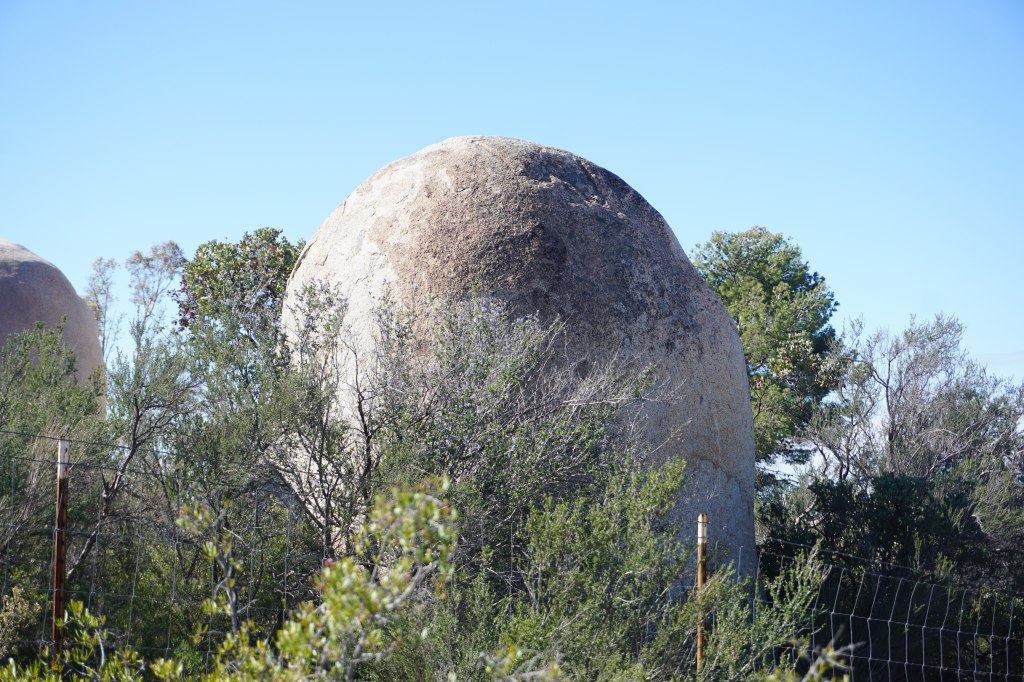

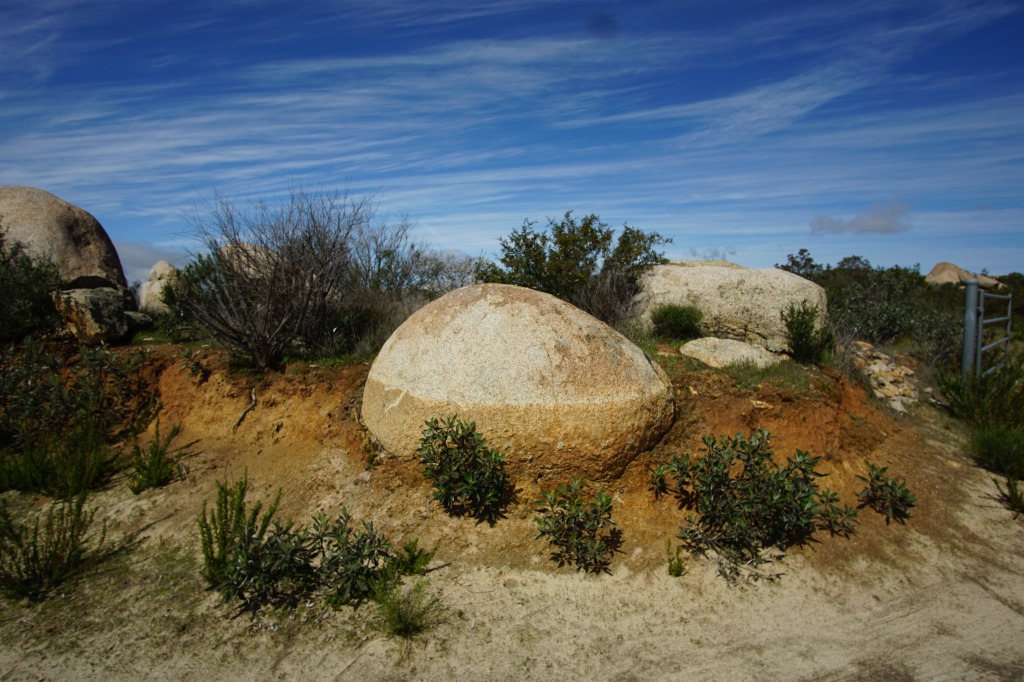

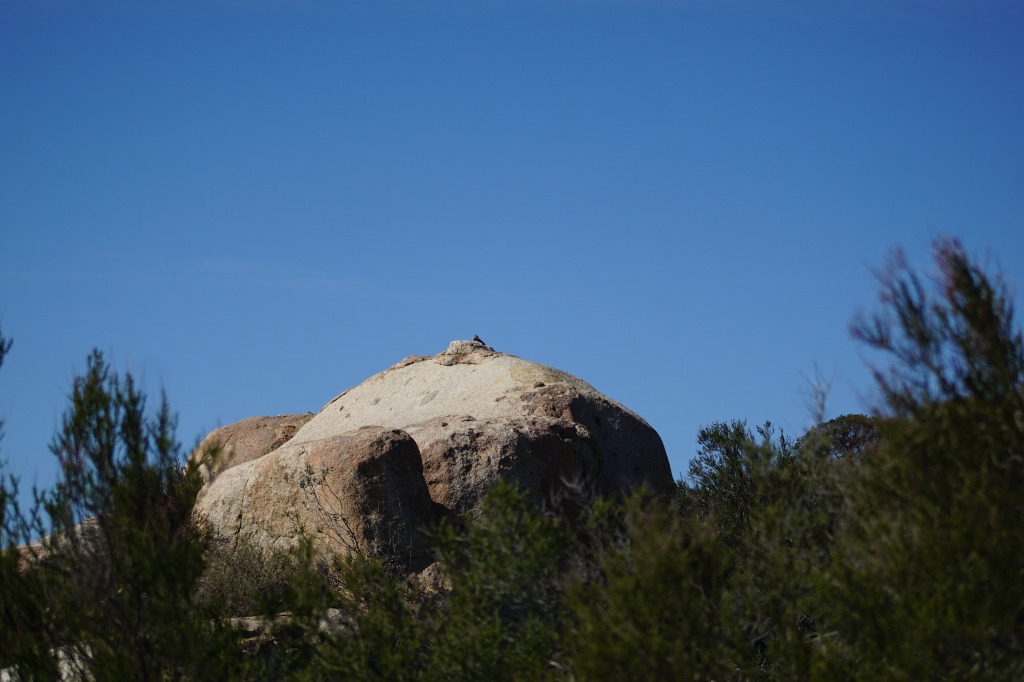
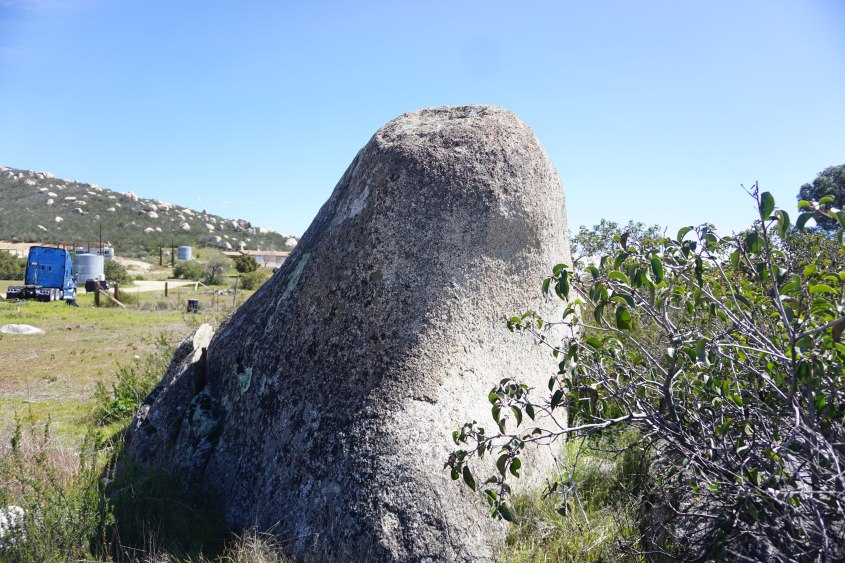

Bubbles and drops take a cellular form due to surface tension that forms a skin around the fluid, and a pressure/density differential across this membrane. The bulging, rounded shapes suggest these formed in atmospheric pressure, rather than deep underground, as consensus science tells us. There had to be a lower pressure and density surrounding these drops as they formed to allow the free-form shapes, bound only by surface tension in the skin.
We will observe multiple other points of evidence that these boulders are electrolyzed boils, including evidence of how the mountains were formed and how they became electrified to boil boulder fields. In this, Part 1 of a 2-part series, we’ll discuss the Boulders. Part 2 will discuss the Cauldron and what caused these mountains to boil.
As we review the evidence and discuss the potential causes and processes, bear in mind the situational context of the Earth at the time. Earth was in upheaval due to some cosmic disturbance. The atmosphere and the ground, all through the crust, was charged. In some places, saturated zones eroded away, electronically machined by sputtering and arc discharge. Other areas had lower levels of saturation, where charge diffused through the ground and caused secondary and tertiary events at the surface that aren’t easily identified with something purely electrical. Thermodynamics, chemistry, fluid dynamics all conspire to increase the complexity of natures product. The granite cauldron is a display of such complexity.
The Boulders
Examination of the rocks, and the region as a whole, leads me to conclude the granite was boiled as a consequence of electrolysis in an underlying aquifer, where oxygen and hydrogen became segregated and channeled through layers of sand and water. The oxygen channels reacted with elements in the layers of sand, creating blossoms of hot boiling silicon compounds that solidified in contact with the atmosphere; suddenly cooling, re-combining and re-crystallizing as granite, but still in the shape of fluid drops.
The evidence to back my theory is in the shape of the boulders, which precisely conform to the shape of fast cooling drops and clusters of drops. In fact, the boulders conform to shapes made of melted glass – silica dioxide – which is what these rocks are largely composed of. They do not conform to the expectations of conventional erosion. There is also evidence in the topography of the coastal mountains, which display the clear patterns of a large discharge of current from the Earth.
This differs from the consensus theory which has granite formed deep in the Earth as a volcanic flow that didn’t erupt to surface, but became trapped under extreme pressure and temperature for eons as it’s crystals grew. Then an accordion-like action of the Earth’s crust, triggered by subduction of the continents, caused these granites to be shoved 5000 feet above sea level where they have been lashed by wind, rain and freeze for millennia to produce the polished and rounded, but sometimes square granite boulders that we see.
At least the consensus and I agree there was extreme heat from within the Earth. My boiling drop-theory suggests things pretty much happened all at once due to a high voltage electrical impulse diffusing through a sandstone aquifer.
Boulder Foam
Evidence the boulder formations are boils is their shape, as depicted in the images previously shown, where singular drops formed and froze. While some retained an ovular shape, they dehydrated and contracted as they cooled, often leaving conical or flattened drops. This is exactly what one expects from a hot molten drop that cools, dries and solidifies quickly.
More often, however, one finds clusters of boulders that were once co-joined, like bubbles in a foam. In a foam, bubbles and drops conform to each other, matching shapes across cellular membranes. It’s very obvious the boulders shown in the next set of images are clusters of drops that have dried and fallen apart, leaving matching surfaces where they were co-joined.

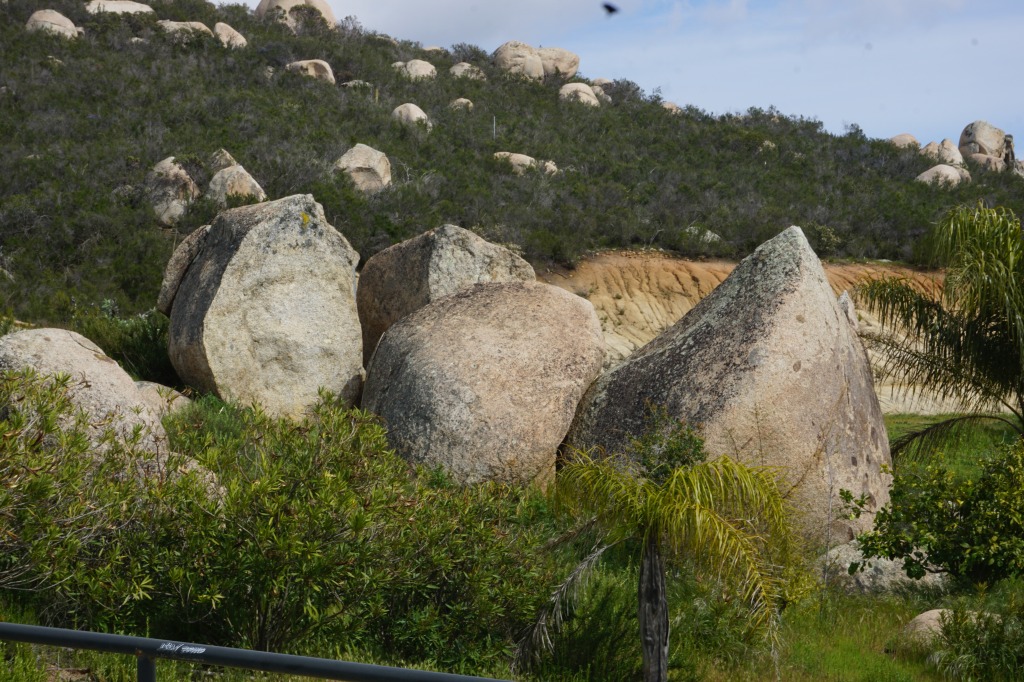
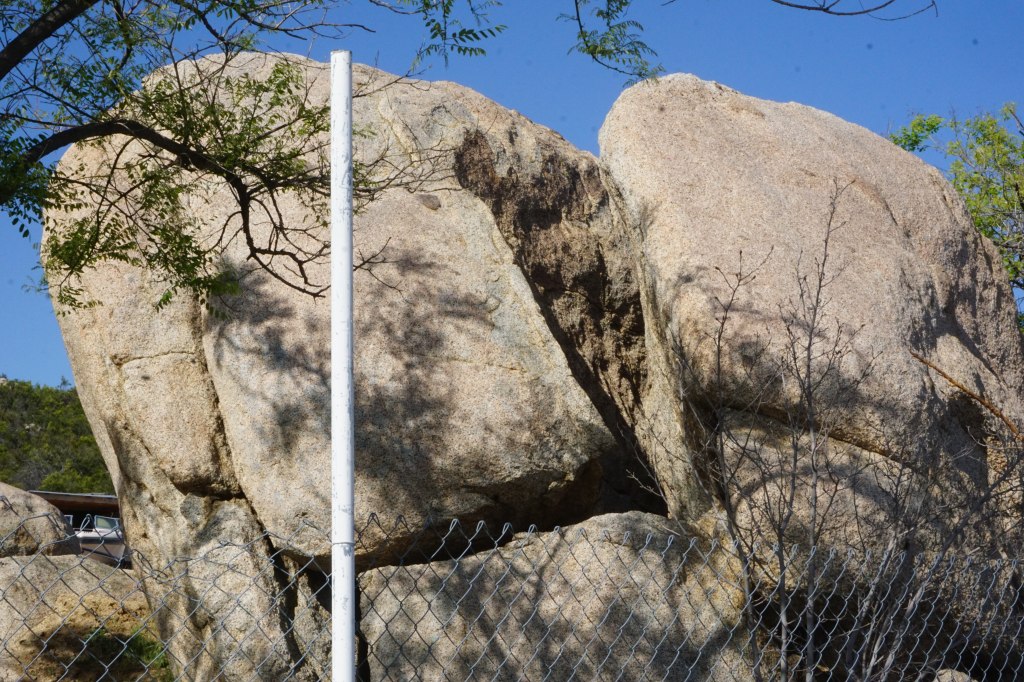

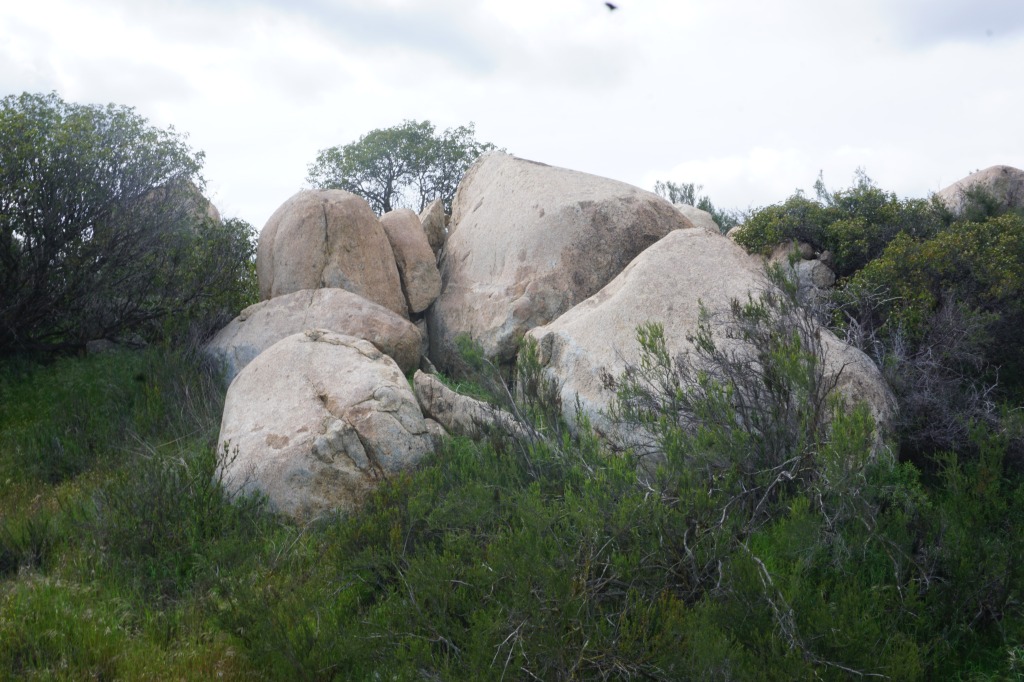
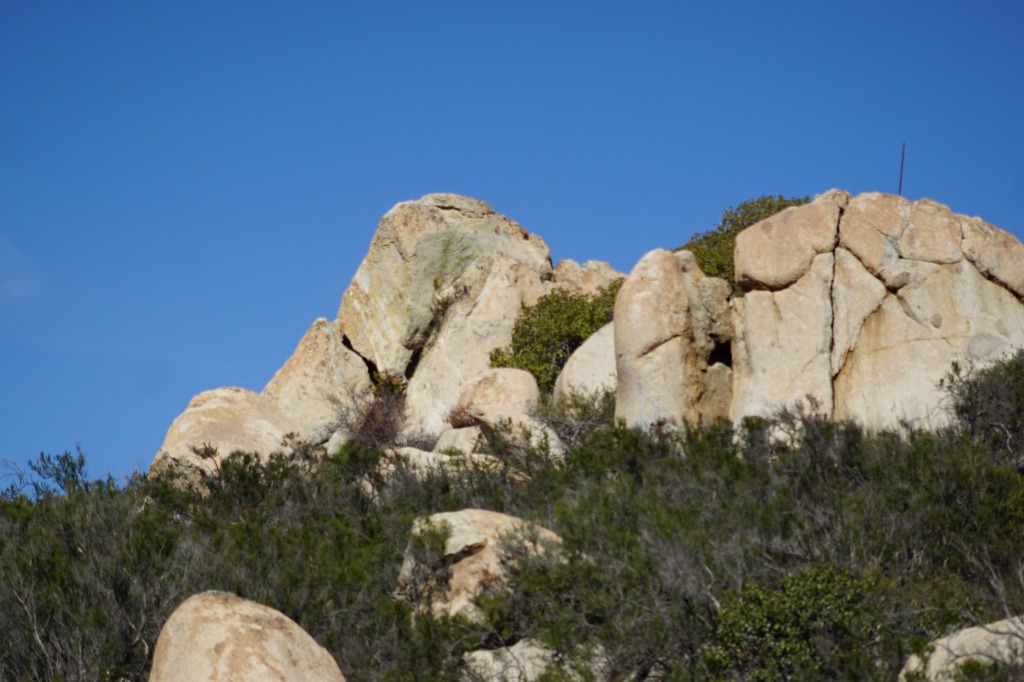

Steam and other gasses exited the rock as it cooled. The expansion of gas and steam at the surface contact with atmosphere likely helped cool the surface faster, increasing the surface tension in the skin and causing shrinkage of the drop. As the drop shrank it separated into lobes, which further shrank and broke apart.

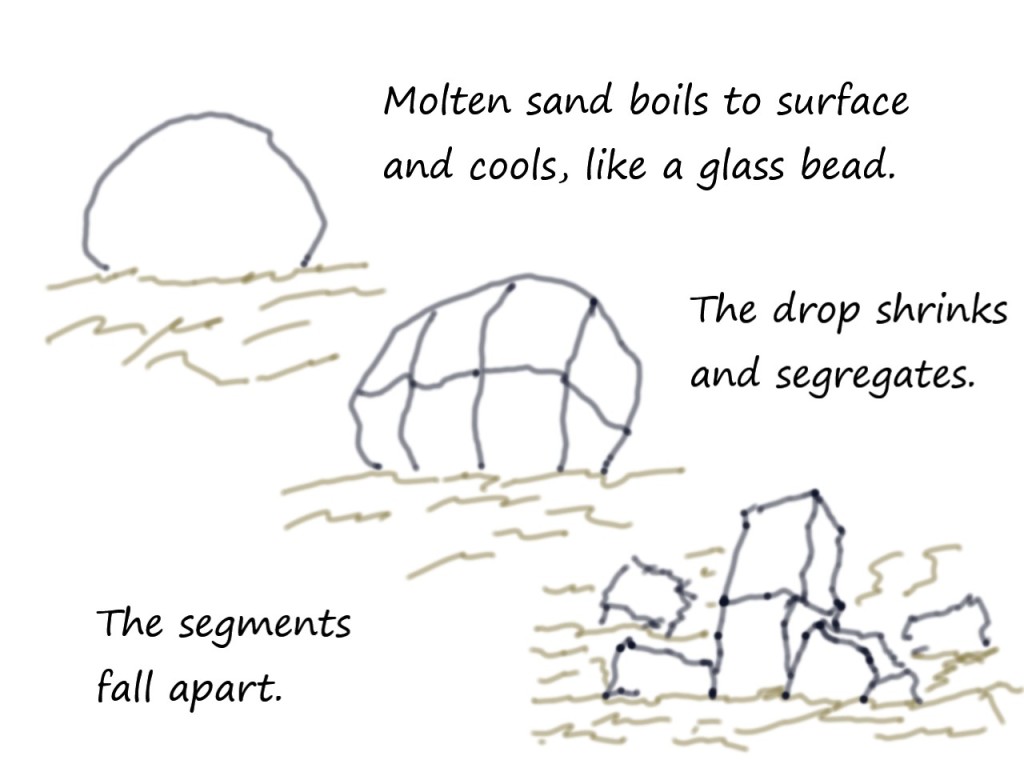
Comparing the boulder clusters shown, to the bubble clusters in the next group of images, one sees the same polygonal interfaces, the same segmenting and interstitial bubbles wedged between larger bubbles. The only difference shape-wise is that boulders are solidified drops, not bubbles, and they shrank as they dried causing segmented lobes to separate and fall apart.


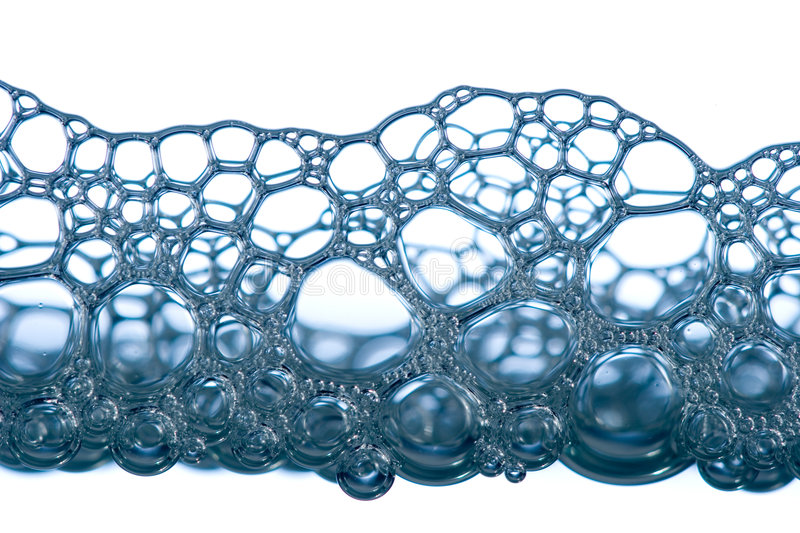

When bubbles and drops cluster, those on the interior of the cluster tend to be polygonal shapes. Because the internal pressure between co-joined cells in a cluster is more, or less equalized, internal membrane walls experience no pressure differential and are flat. Outer cells in the cluster, however have a differential between interior pressure and the atmosphere, and therefore bulge. That is exactly how these boulder clusters are structured.
If one makes a symmetrical cluster of five equal bubbles, the one inside the other four will be a perfect cube. There are several examples of polygonal bubbles in the images shown. Singular boulders tend to be rounded, while boulders in clusters tend to be polygonal, especially the ones in the cluster centers.
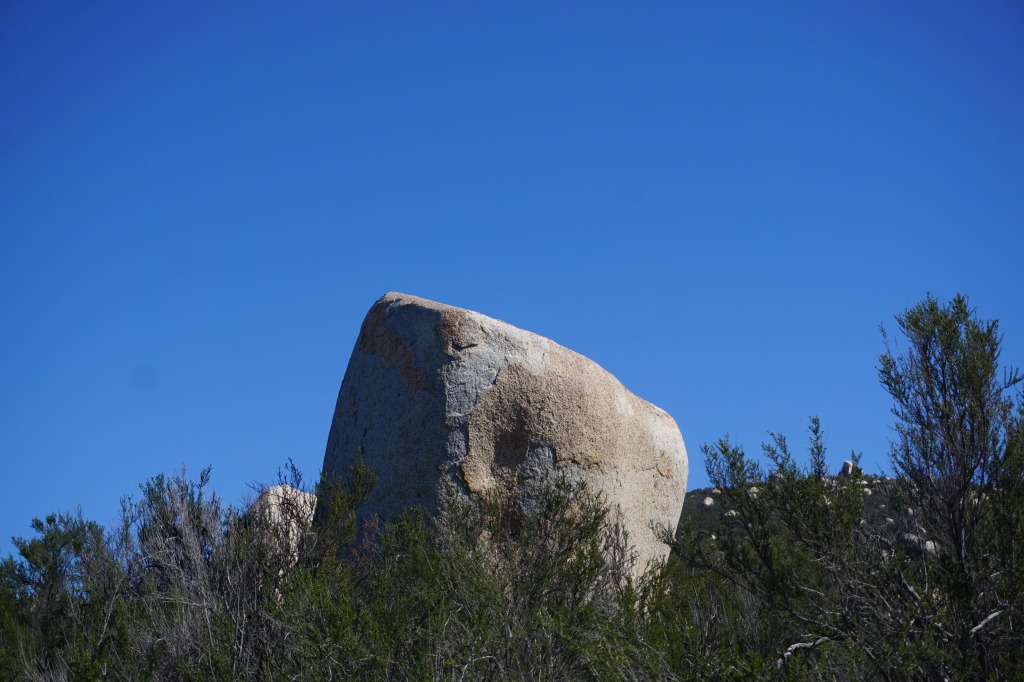


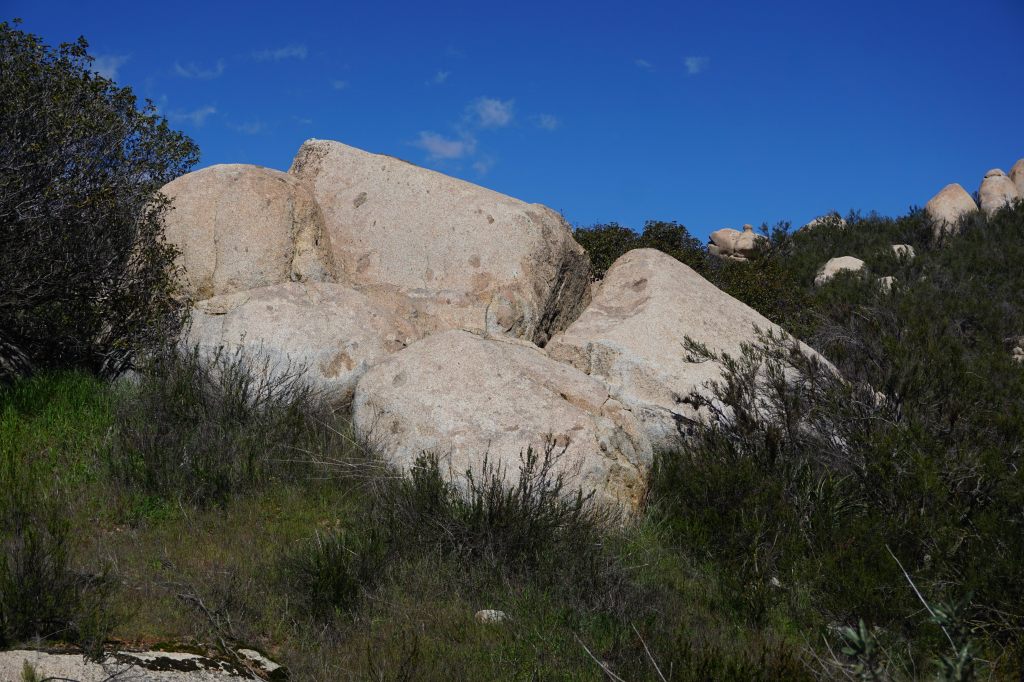
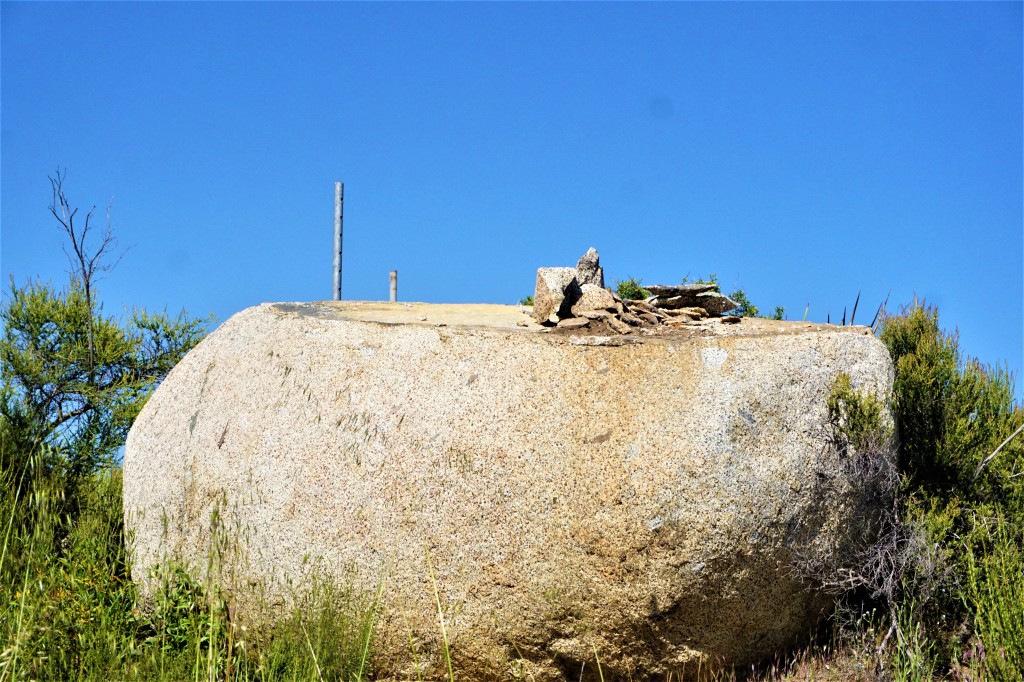
The squared shapes and flat surfaces between boulders is proof they formed as drops in the atmosphere. This granite has no “grain” oriented in a certain direction, or any other internal structure that would cause them to break in a particular way as a result of earthquake or erosion. The only explanation presented by physics is if these rocks were clustered drops. A child can make a perfect square with soap bubbles. I challenge any PhD to do so with erosion.
Surface tension had to conform to the volume reduction, so one of two things happened. If the skin had cooled and recrystallized, it became rigid and further shrinkage of the hot interior caused the hard shell to break, leaving a sharp crack. If the skin was still plastic and viscous when the drop shrank, the skin conformed around the fluid interior leaving rounded edges. Most, if not all rock structures display one, or both consequences of shrinkage.
Separations that occurred from shrinkage after the skin ‘set’ into a hard shell, couldn’t conform and broke, leaving sharp edged cracks, as shown in these photos. These breaks tend to form an “S” shaped curve, not orthogonal segments.
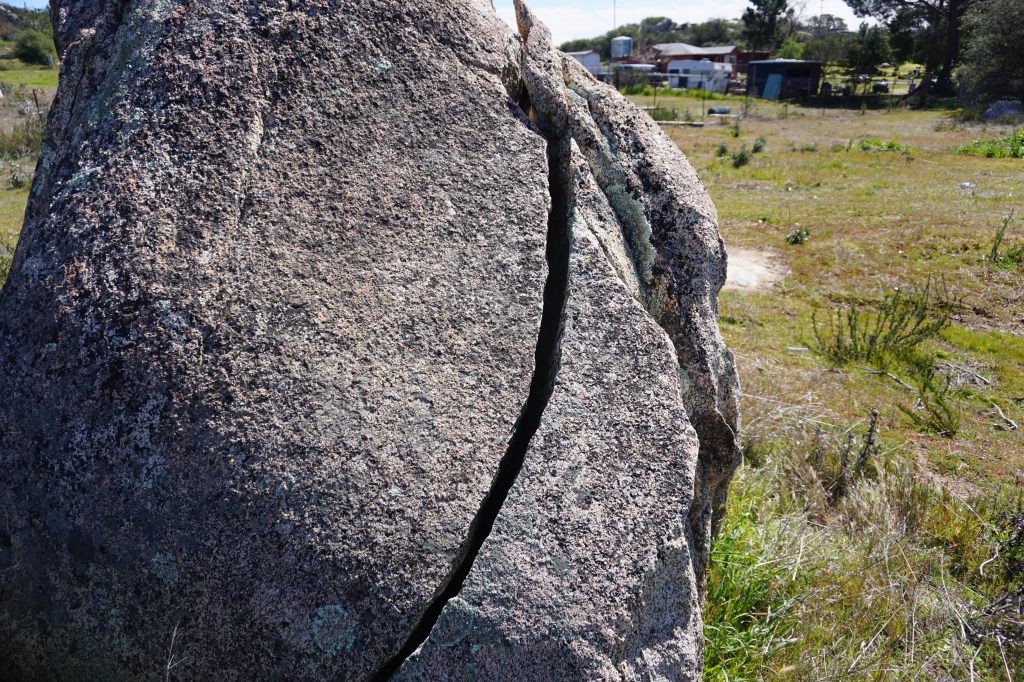
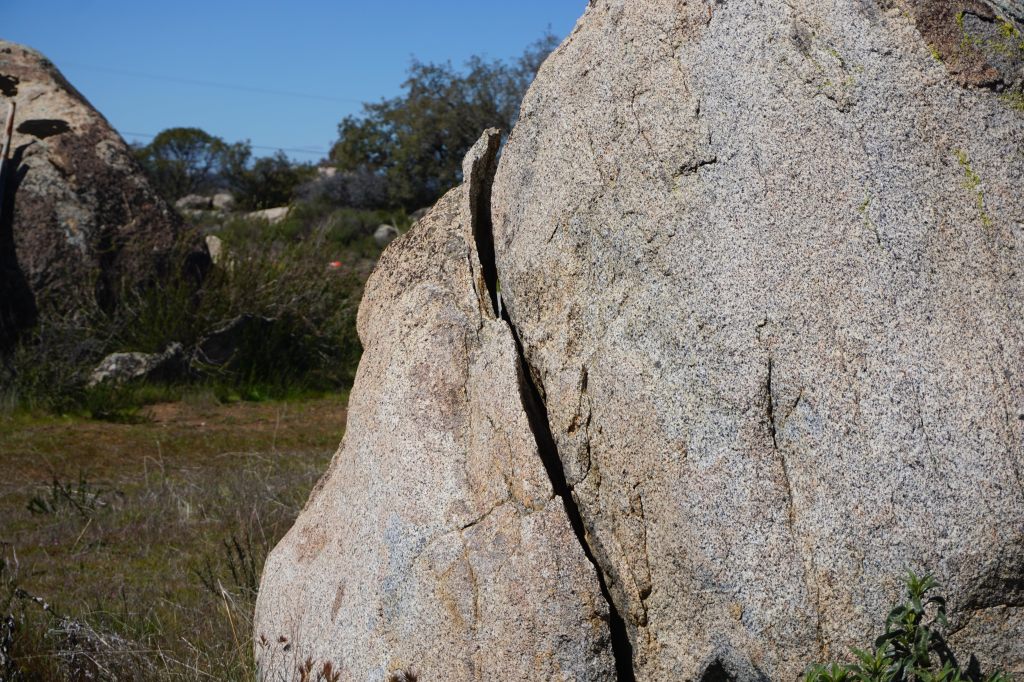
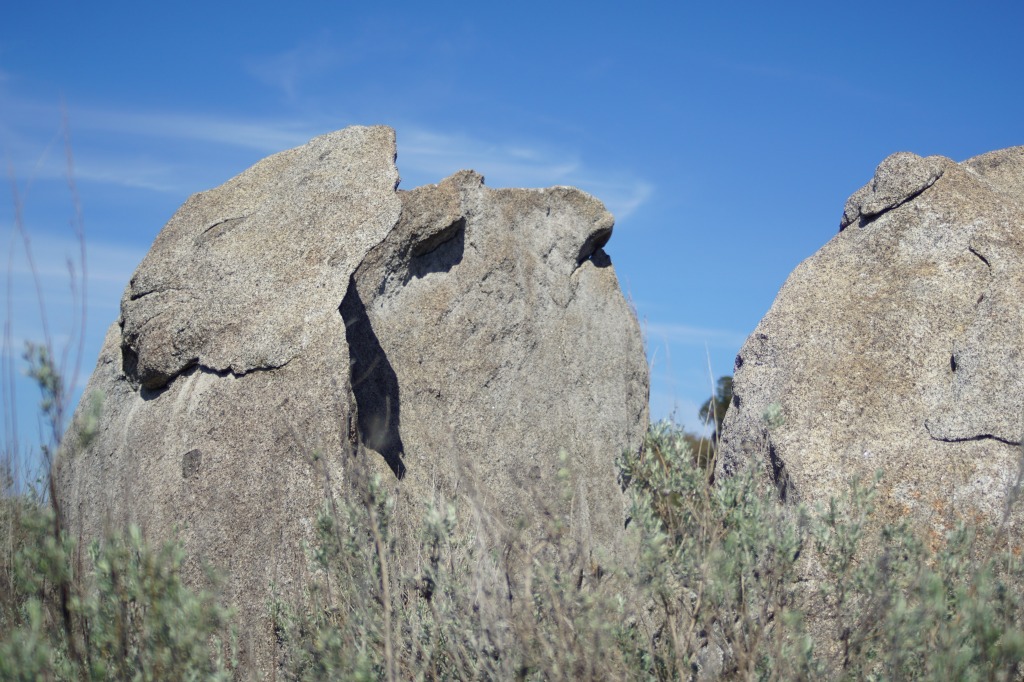

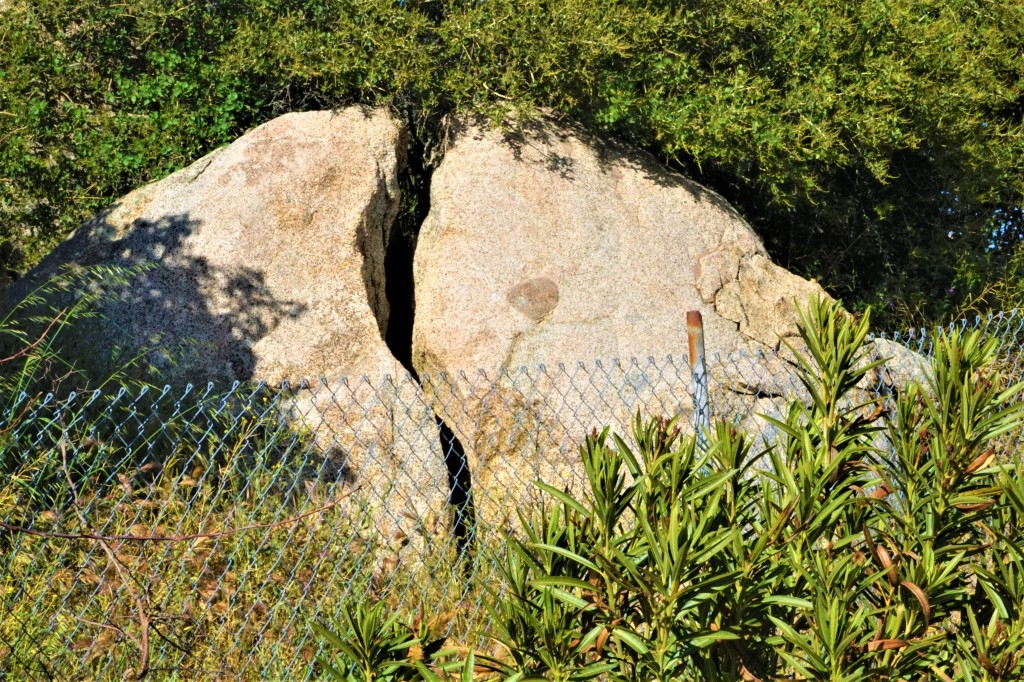
Drops in clusters, with membranes still soft and pliable, show rounded edges and concavities where drops separated and shrank. These cellular segments tend to break parallel and orthogonal, at specific angles particular to each cluster.
The angles, or dip of the horizontal surfaces vary widely. It seems likely some force was pushing some clusters over, like the wind, or gravity was making them topple. The angles from one cluster to another are not consistent, which suggest variable winds, something perhaps expected over a boiling cauldron.
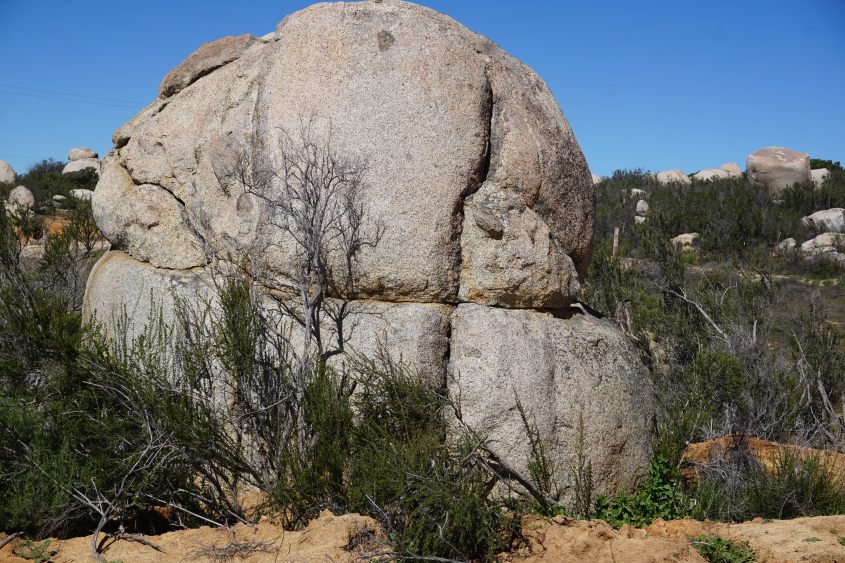




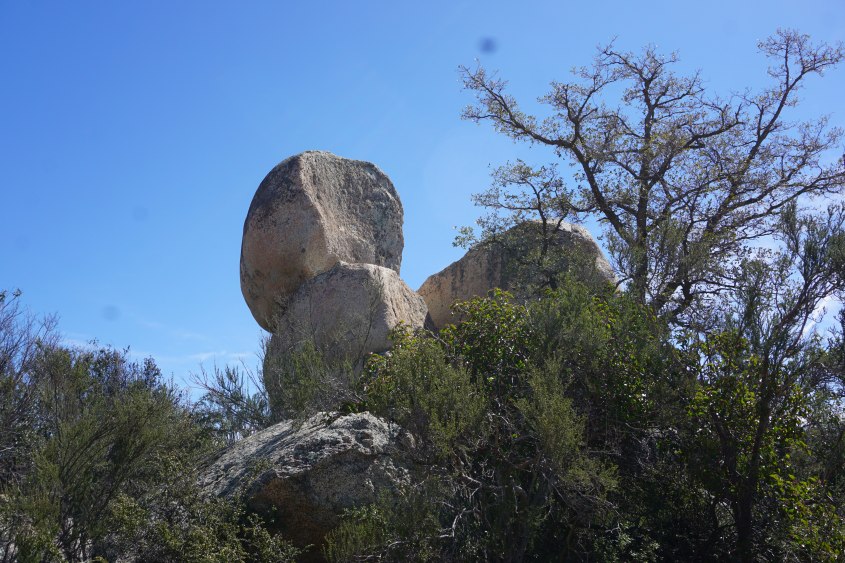
Another compelling evidence these boulders are boils is the columnar geometry of the largest structures. The segmenting is cellular, as already discussed, caused by cooling, shrinkage and surface tension related skin effects. The columnar shape, however, indicates convection. Vertically elongated, clustered polygonal columns are a known effect of heat convection, called – what else: convection columns. What is boiling? A process of heat convection.
Flat surfaces are left where bubble walls pressed in tall squarish columns, and then fell apart after cooling, shrinking, cracking and segregating. Everywhere boulders are co-joined, or conforming to each other in shape, interfaced with puzzle-piece concavities and bulges, because they were fluid and plastic during formation.
The granite boulders are visually patterned precisely as one would expect a viscous, frothing fluidized matrix to look if it were frozen mid-boil. Compare these formations to viscous drops, bubbles, foams and boils of various fluids and you can find analog formations with these shapes and features.
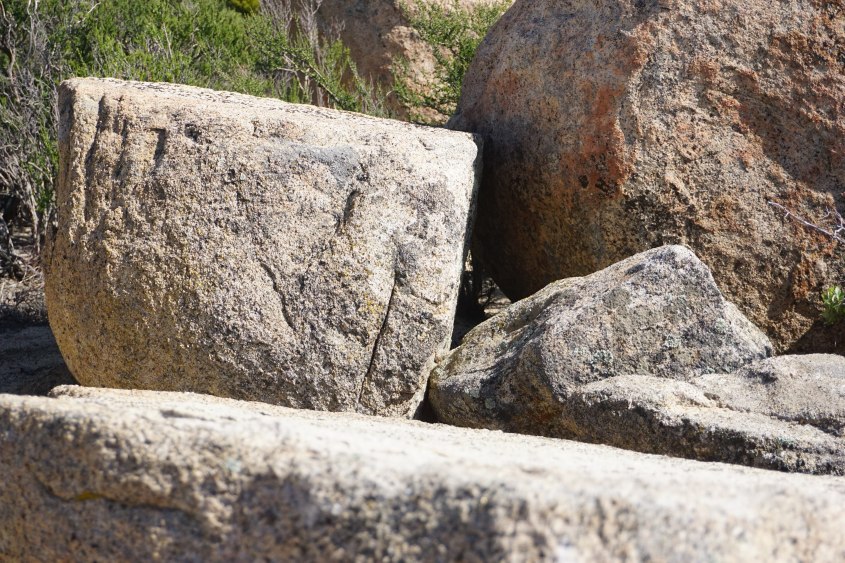




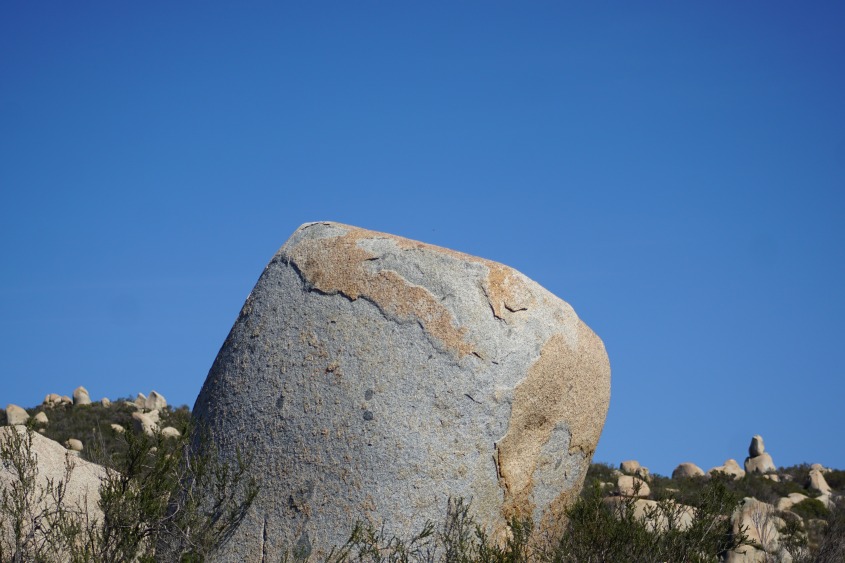
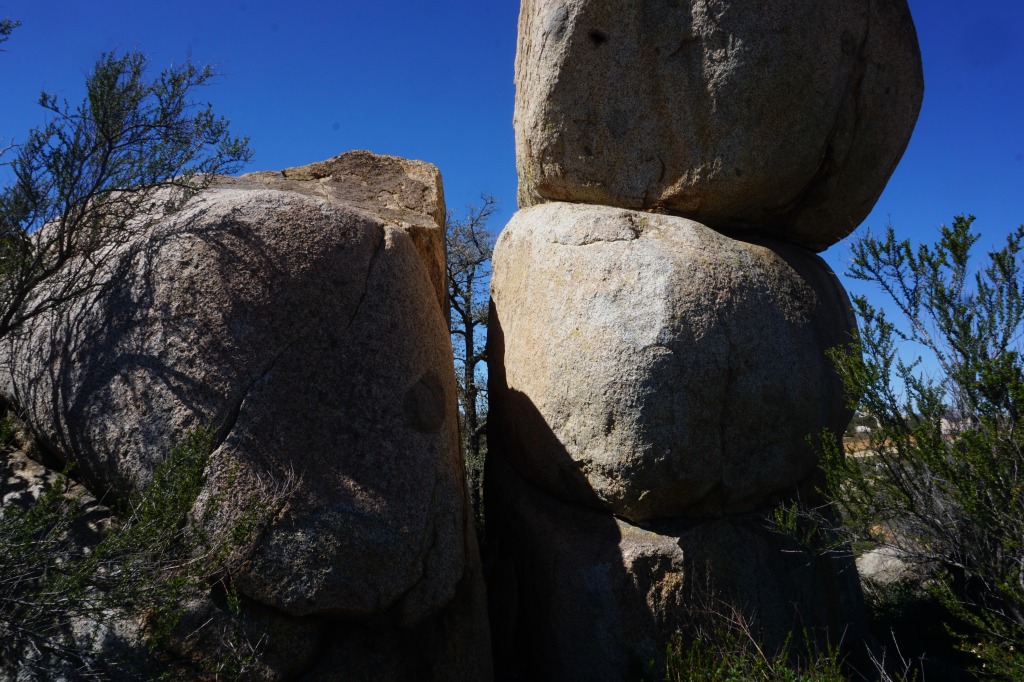
Look at the sequence of images below, and it’s apparent how the bubbles separate. It begins with a thin crack where a shrinking drop begins to segment into smaller drops – top left and bottom. Then drops begins to separate, and the edges round-off along the seam in fluid manner, like a bubble. And then they separate completely, like water balloons. These are examples of shrinkage when the skin is still plastic and molds around the cooling drop of molten material.
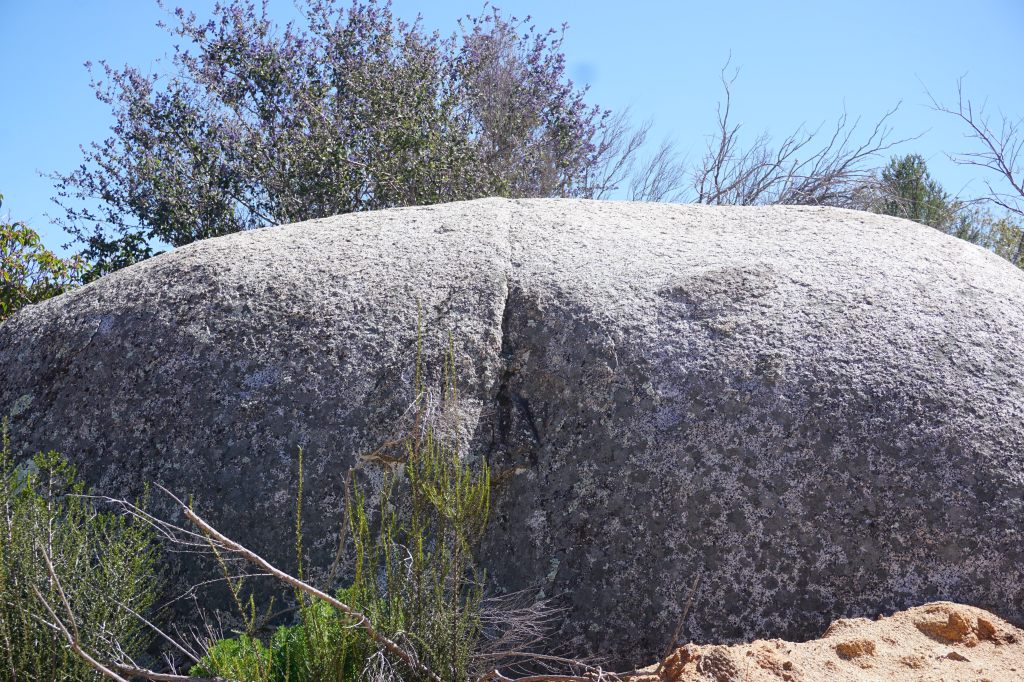
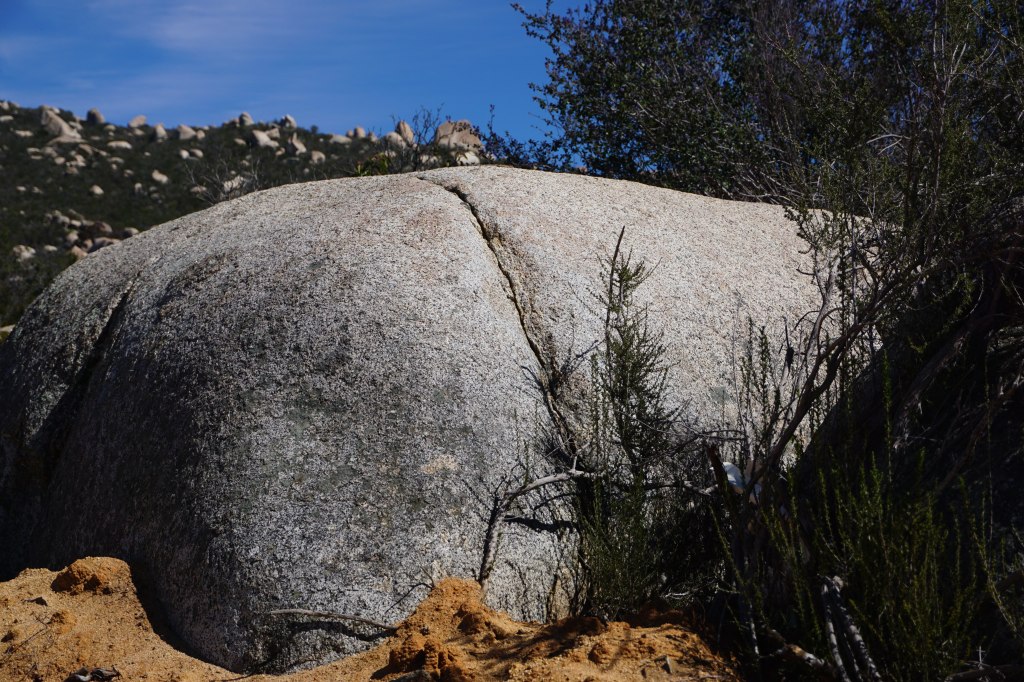
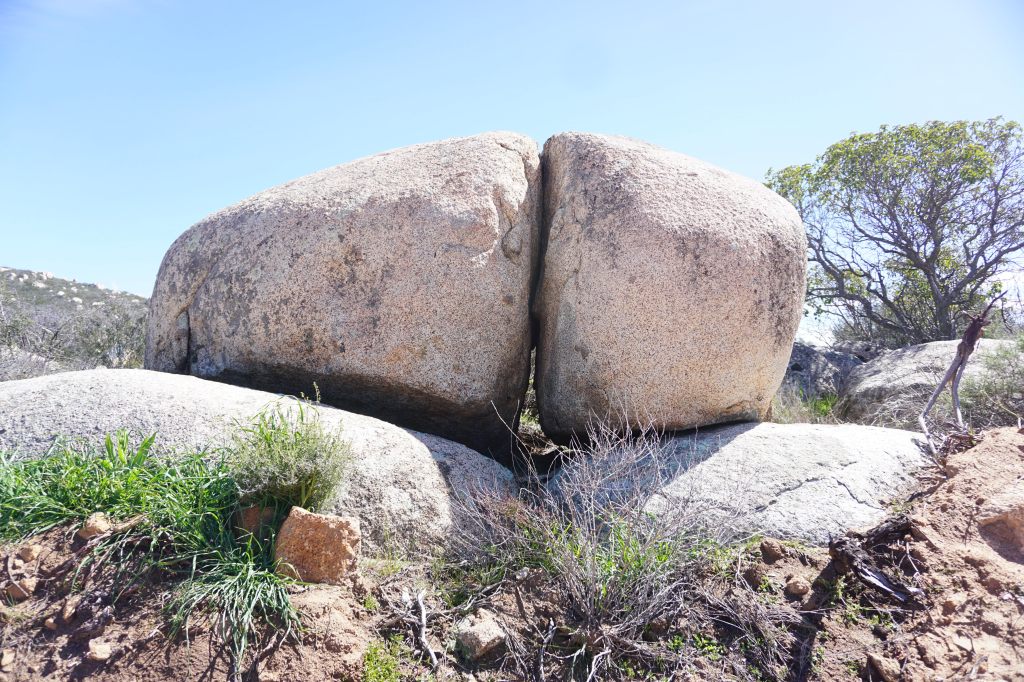
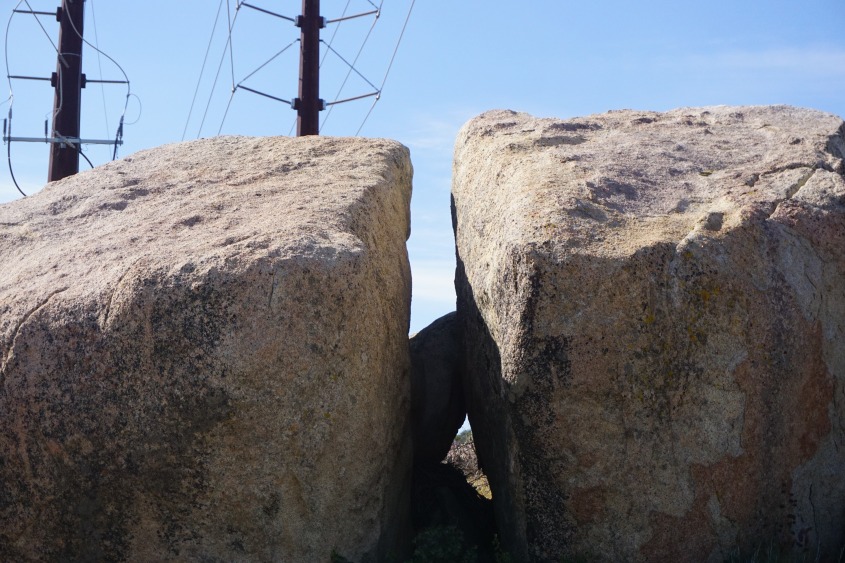
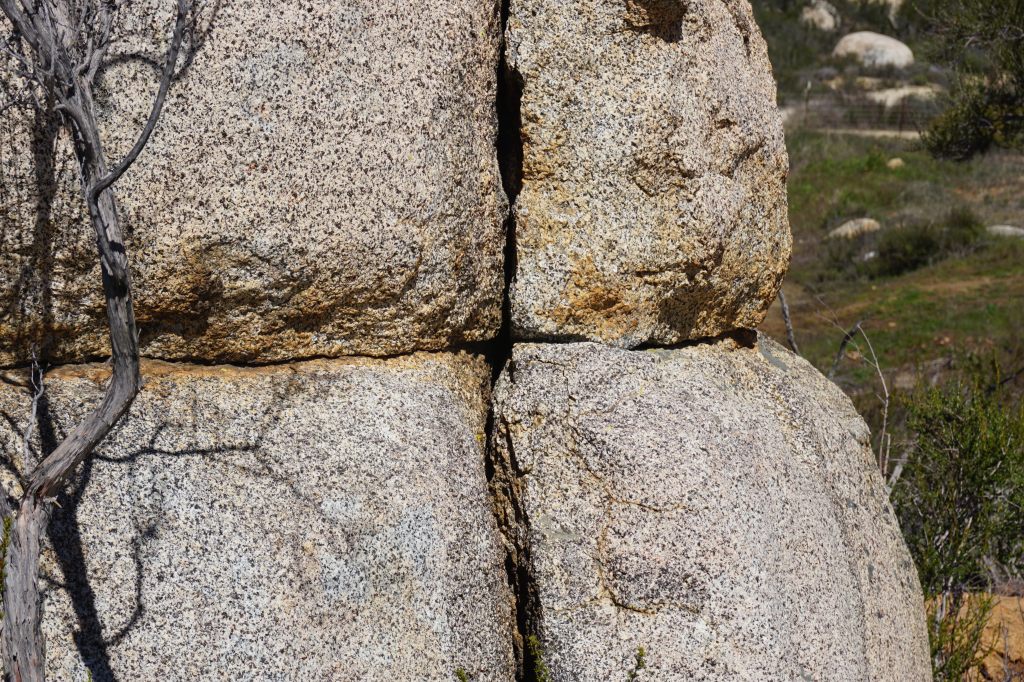
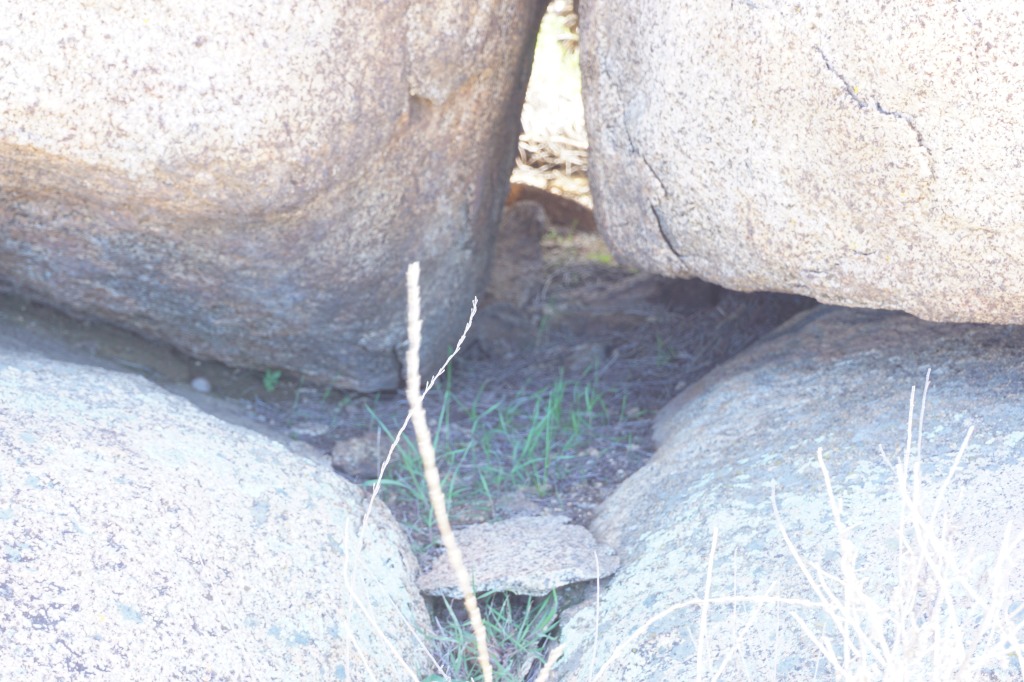
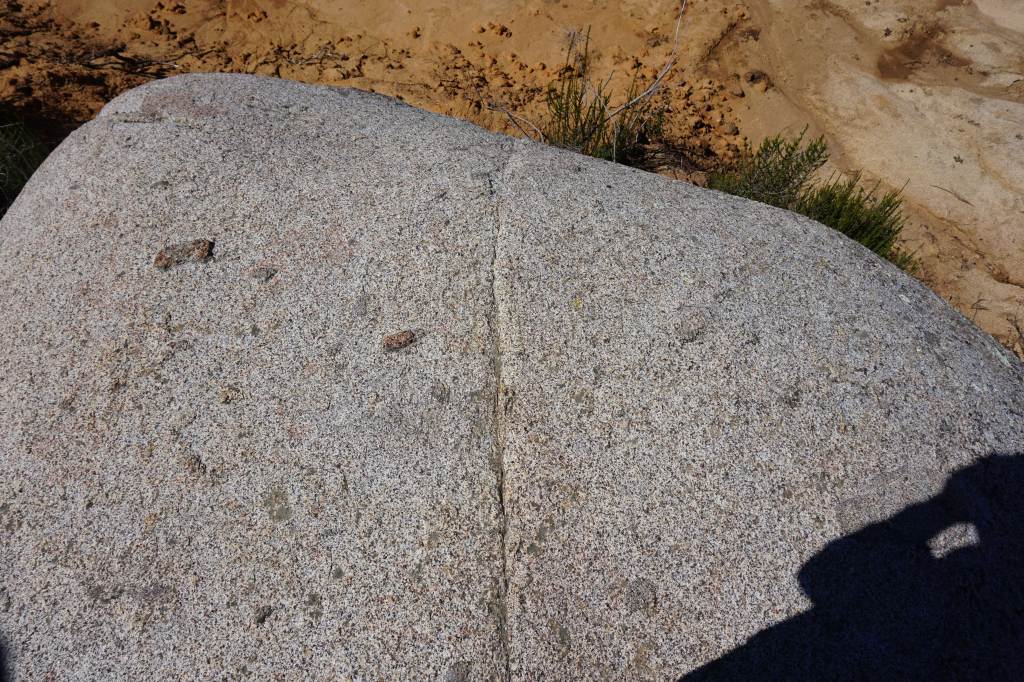
Another evidence for boils are top hats – one boulder directly atop another. Consider a viscous, molten drop where the surface rapidly cools and crystallizes to a semi-solid crust. And then more hot fluid pressures up inside, but the bubble’s crusty skin can’t expand, so fluid gushes out the thinnest skin of the bubble at the very top, thus creating a new bubble stacked atop the old. In the case of a cluster of bubbles, they can stack into columns.

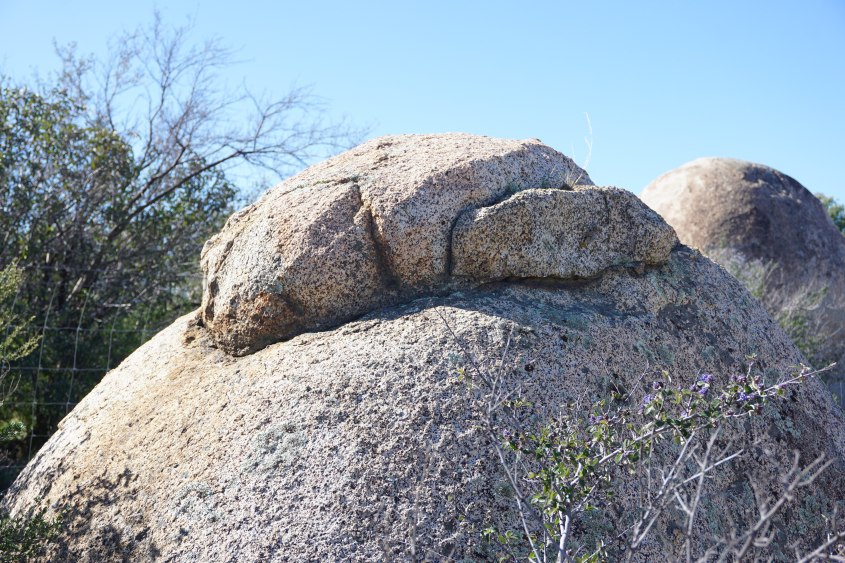



A similar feature is the necklace, where interstitial drops seep-out around the base of larger drops, forming a beaded necklace.

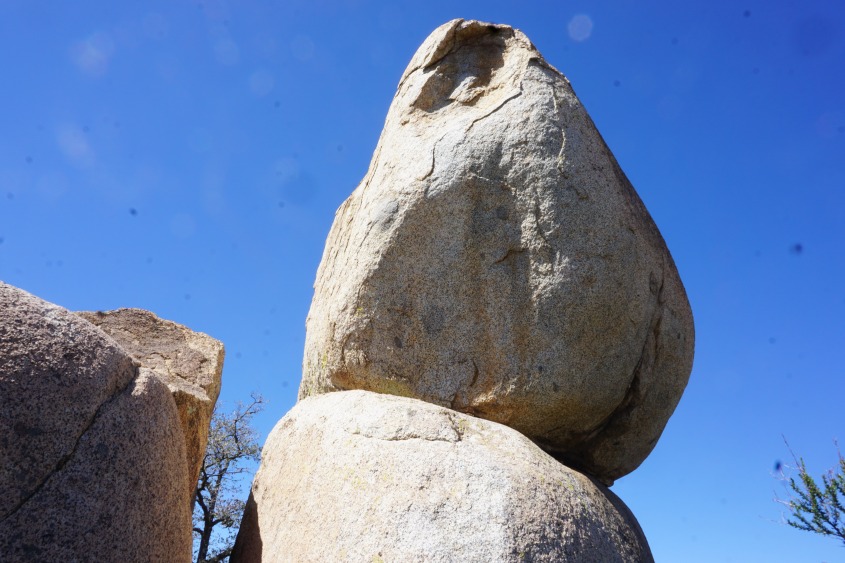



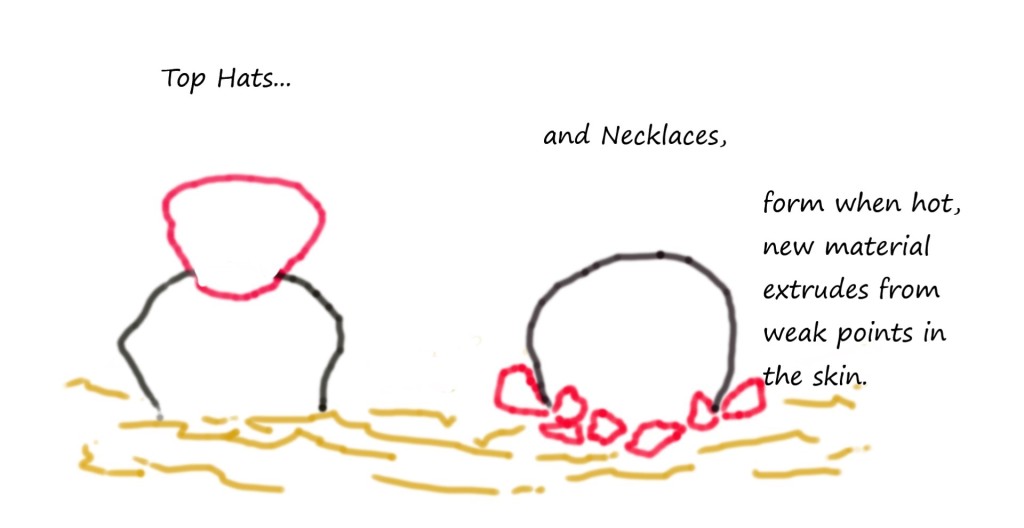
One evidence I consider irrefutable is the “water-balloon effect”. The next group of images is of the same rock structure from different angles. I’ll just point out the obvious. The top, segmented rocks were once fluid sacks, like viscous water balloons that erupted out the top of an older boil and flowed down it’s back before shrinking, segmenting and solidifying.


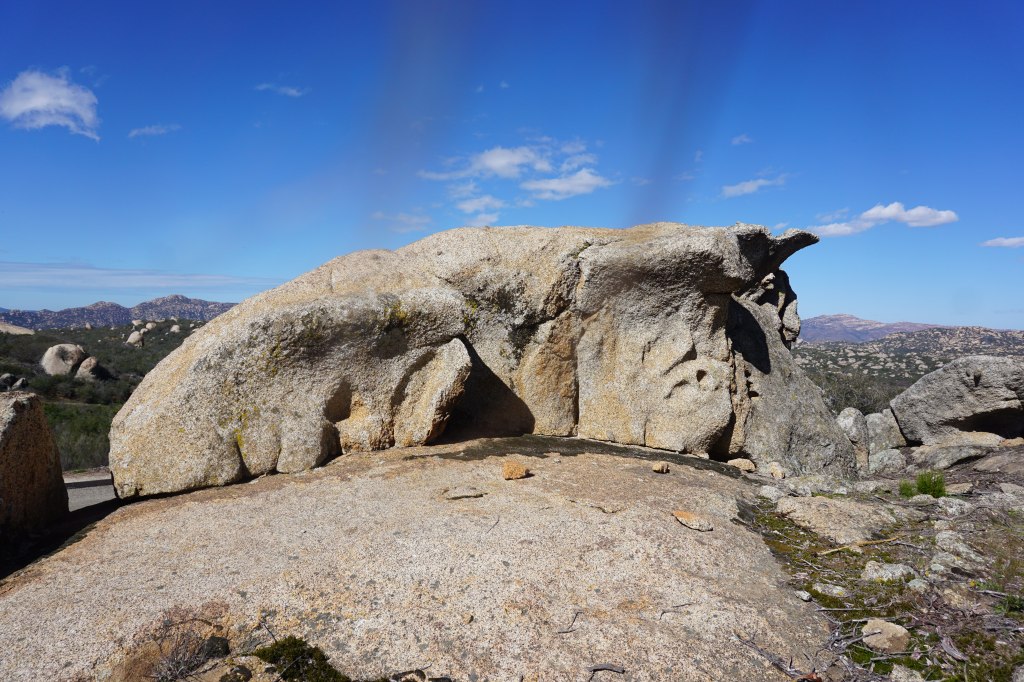
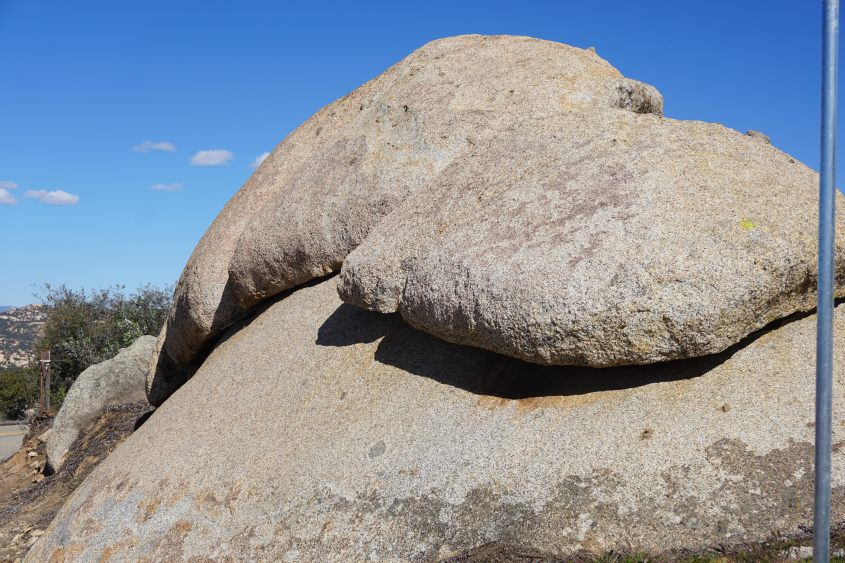

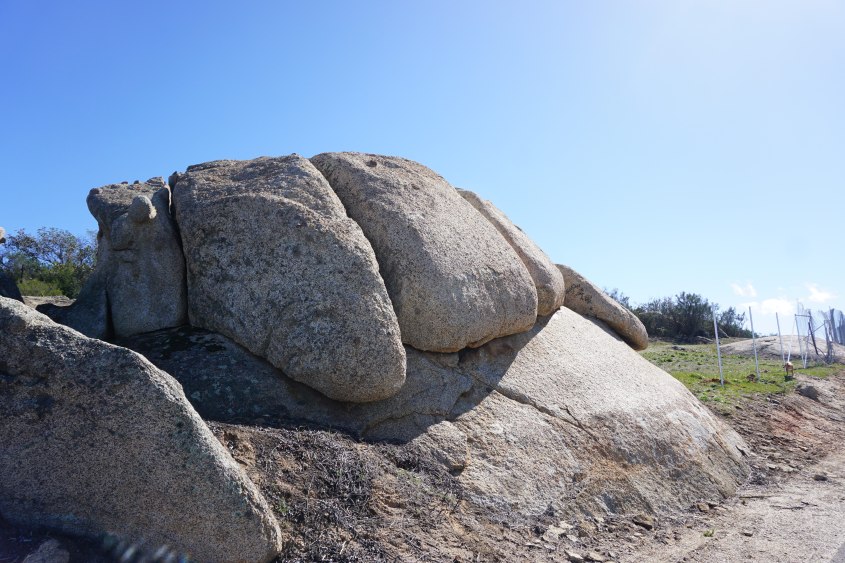
Opposite the dripping side of the balloon is a concave side where drops in the cluster pressed against other drops that have since fallen away.
Wind, I suspect, flattened and pressed these bubbles together forcing the concavities instead of forming the more typical orthogonal cracks and separations seen in the majority of boulder clusters. The inner folds of the concavities have fluid ripples – the actual impression of turbulent waves and ripples in the separating skin between bubbles. I interpret this as an indication wind, seismic, or some other cause was vibrating the bubble.

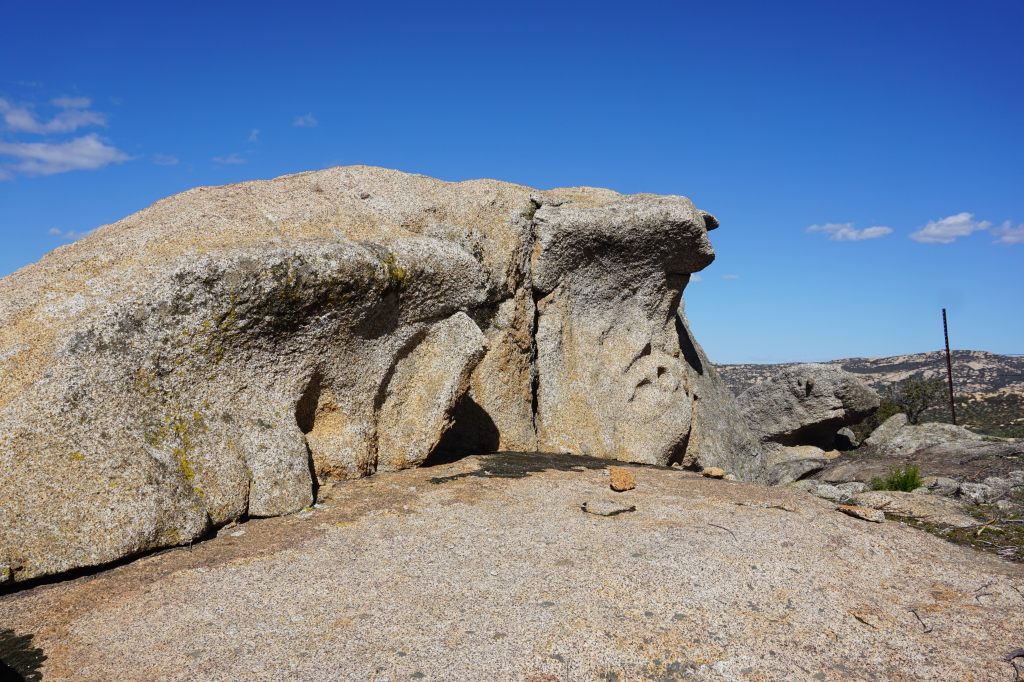
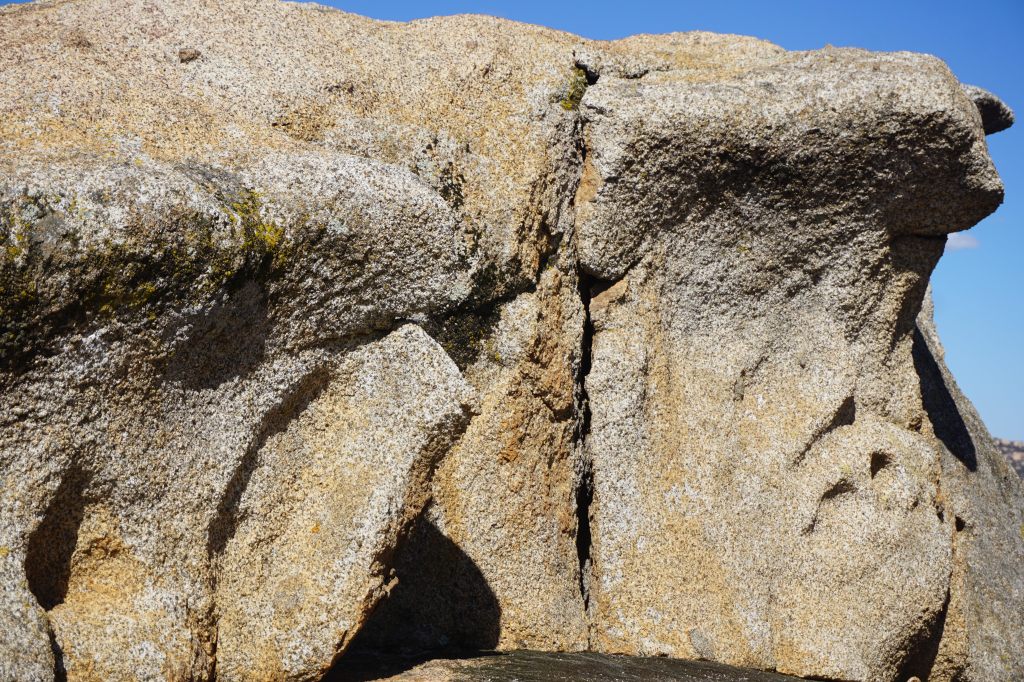
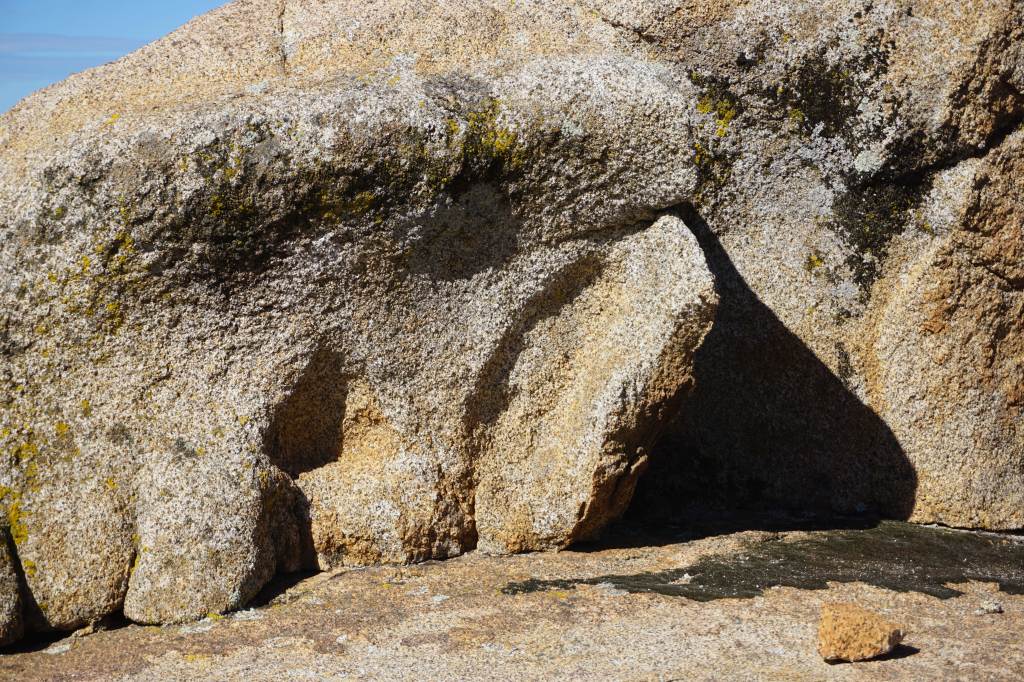
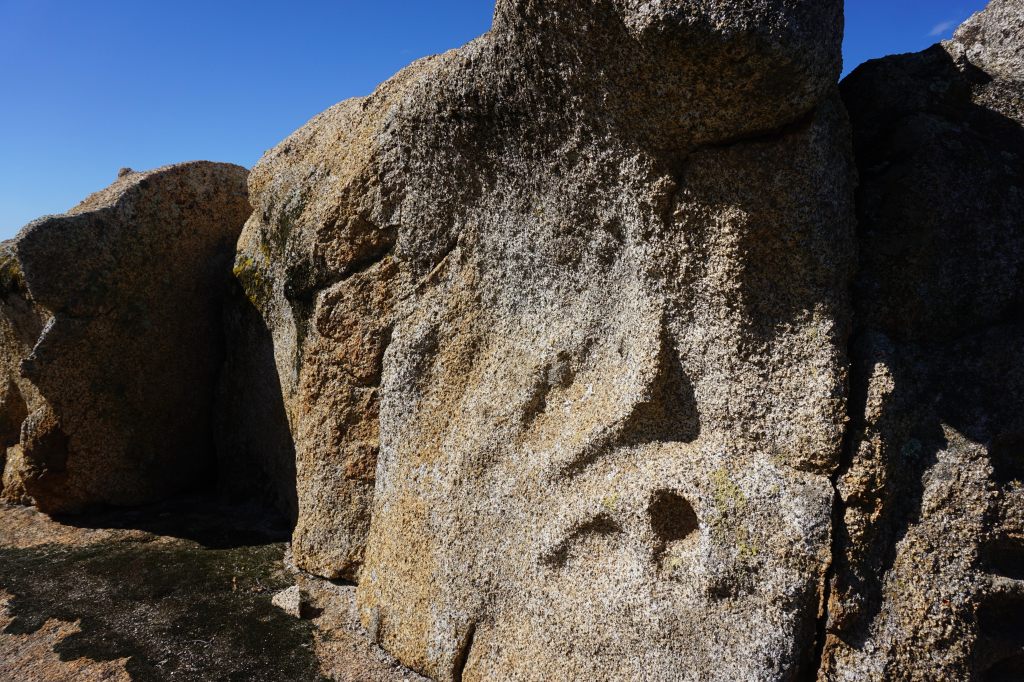
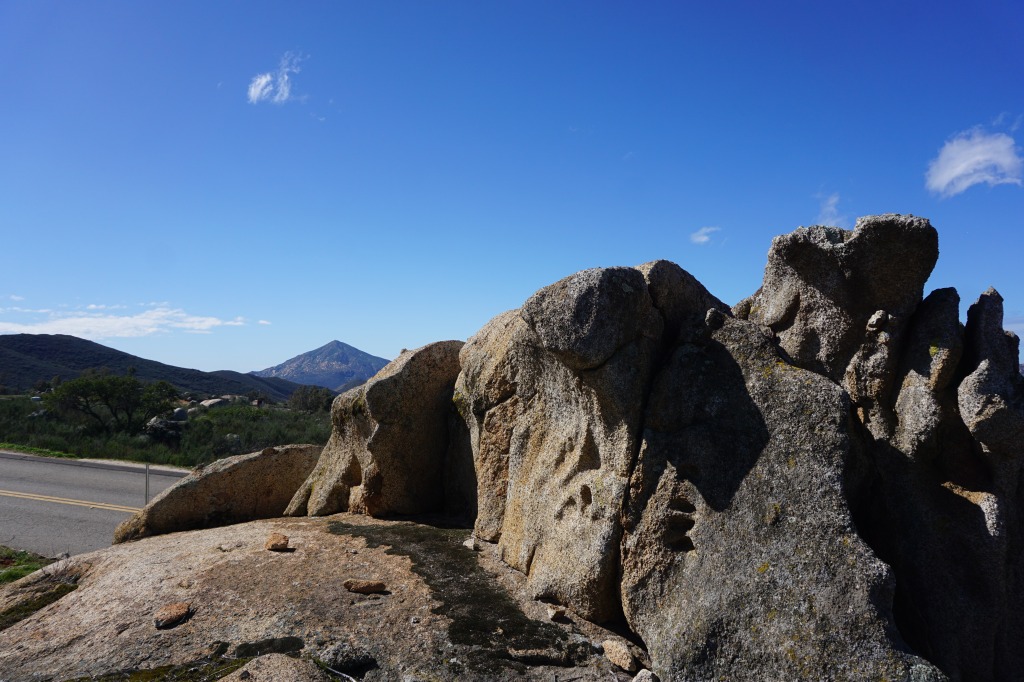
In the following gallery are several more examples where drops in a cluster pressed together, leaving concavities beneath overhanging ‘water balloons’:
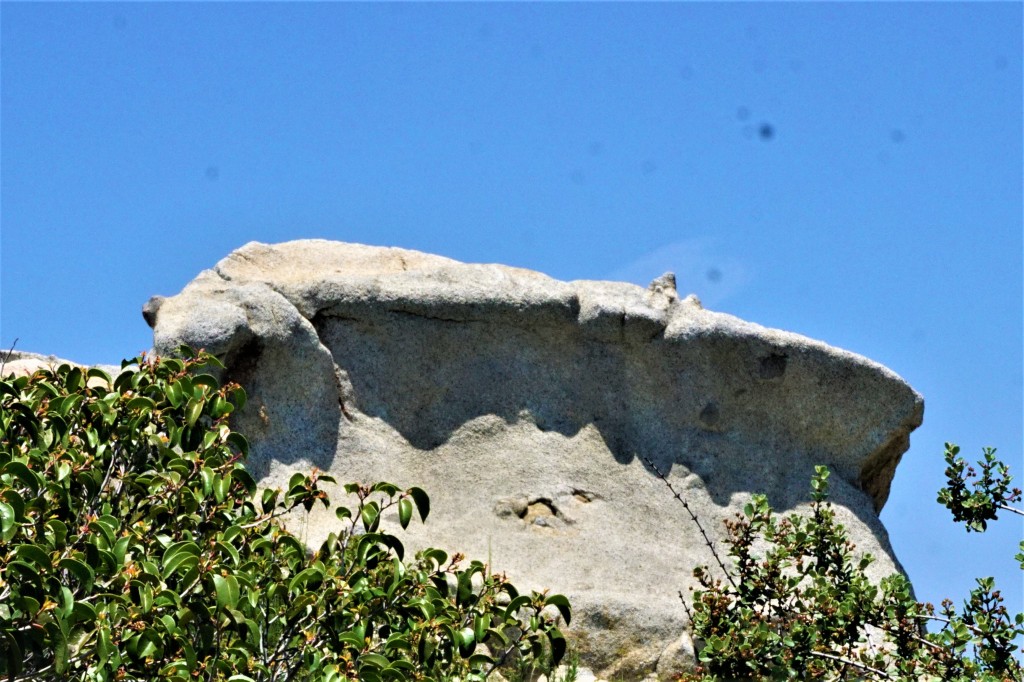

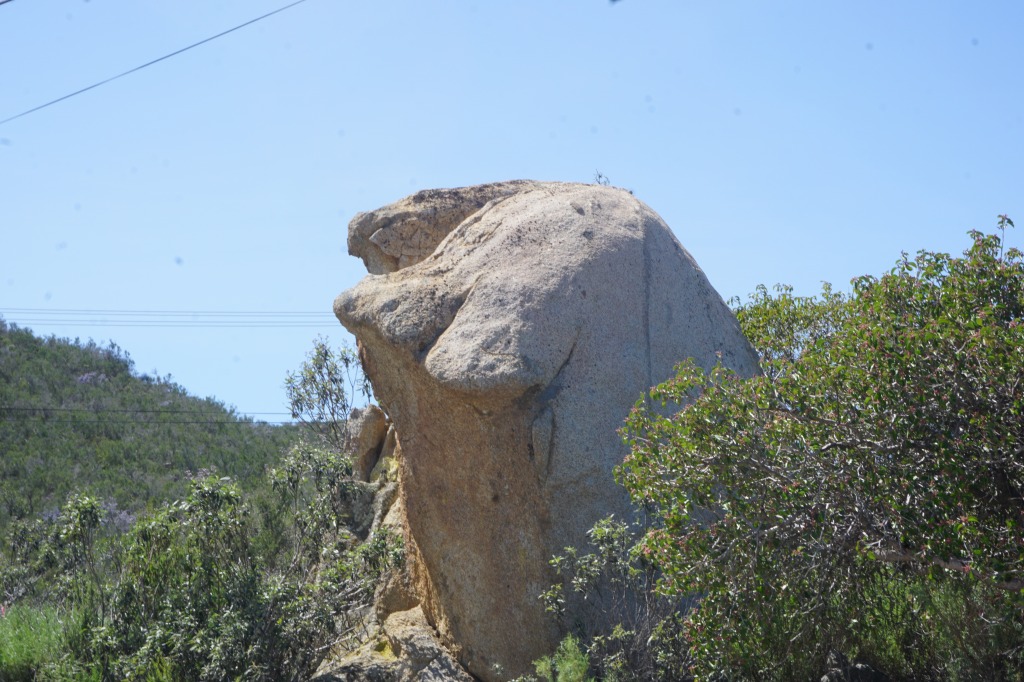
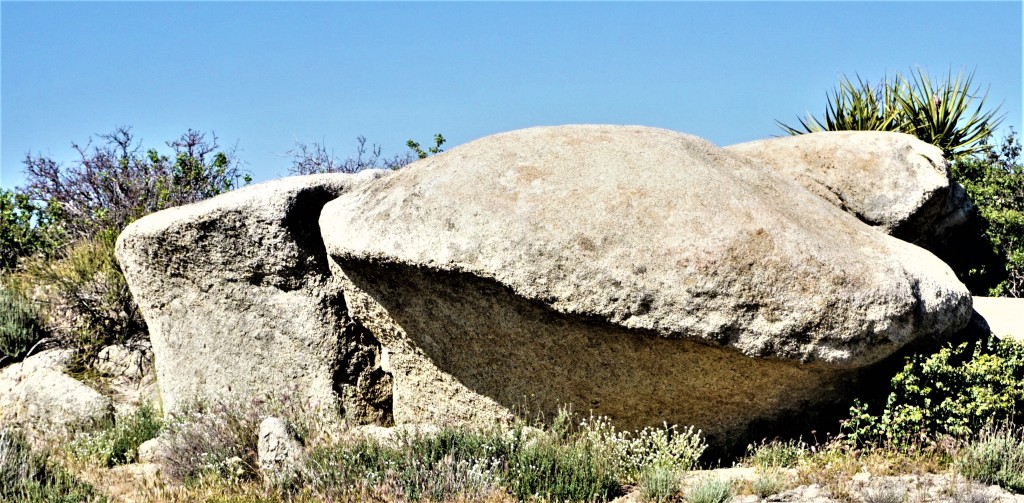

There are multiple other patterns in the rock that display fluid/drop/bubble behavior. Large waterfalls of rock can be found where a molten mass erupted from the flanks of a mountain and sheet-flowed down it’s side, like a volcanic lava flow.
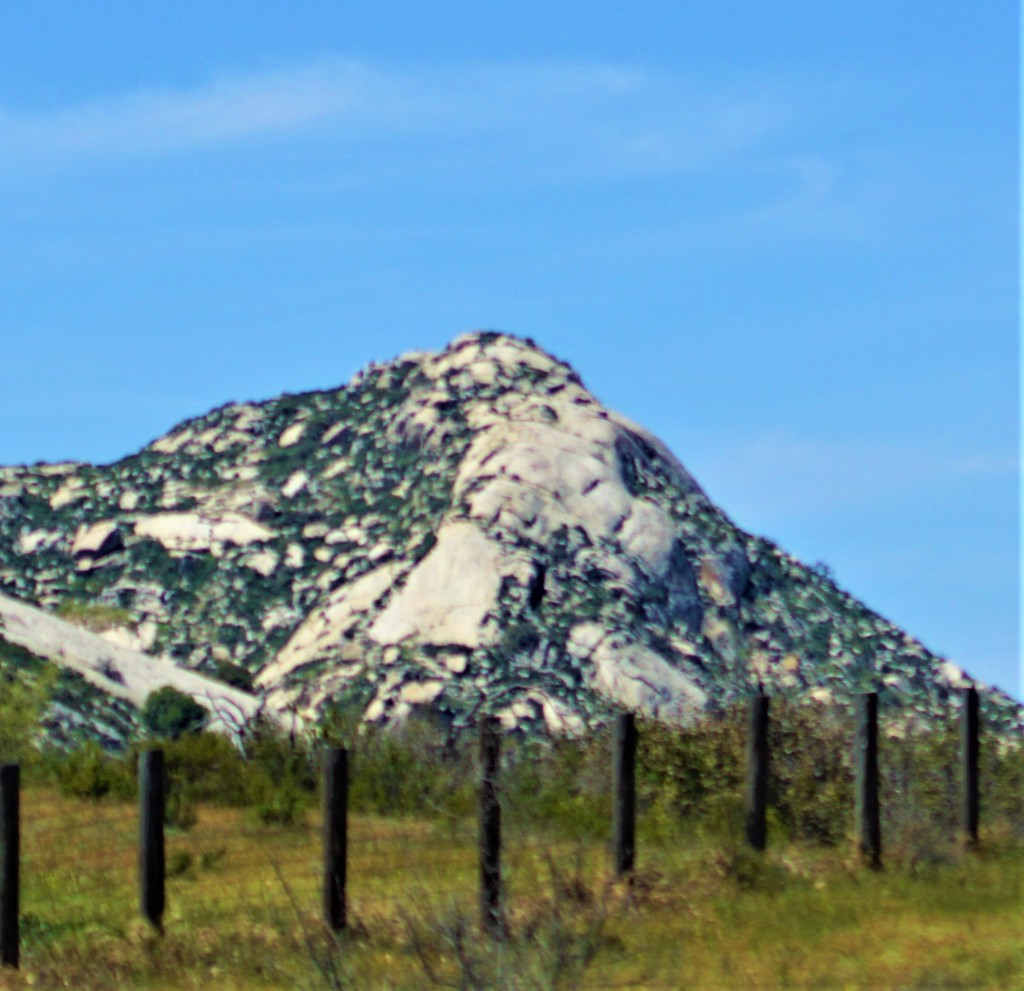
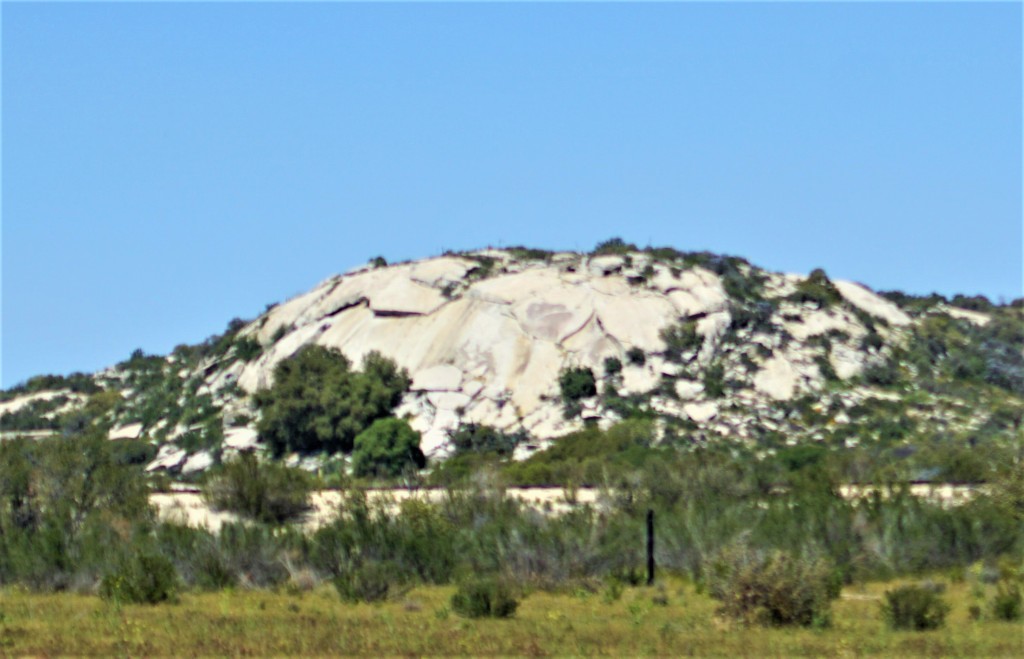


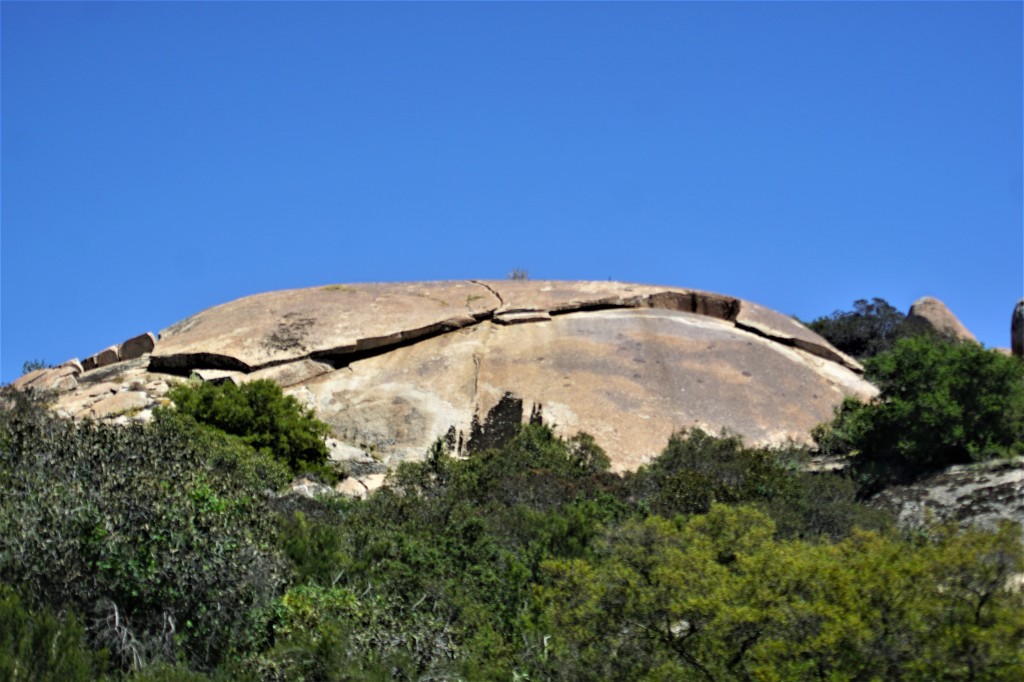


Close examination of sheet-flow patterns show even more evidence, such as the appearance of standing waves.
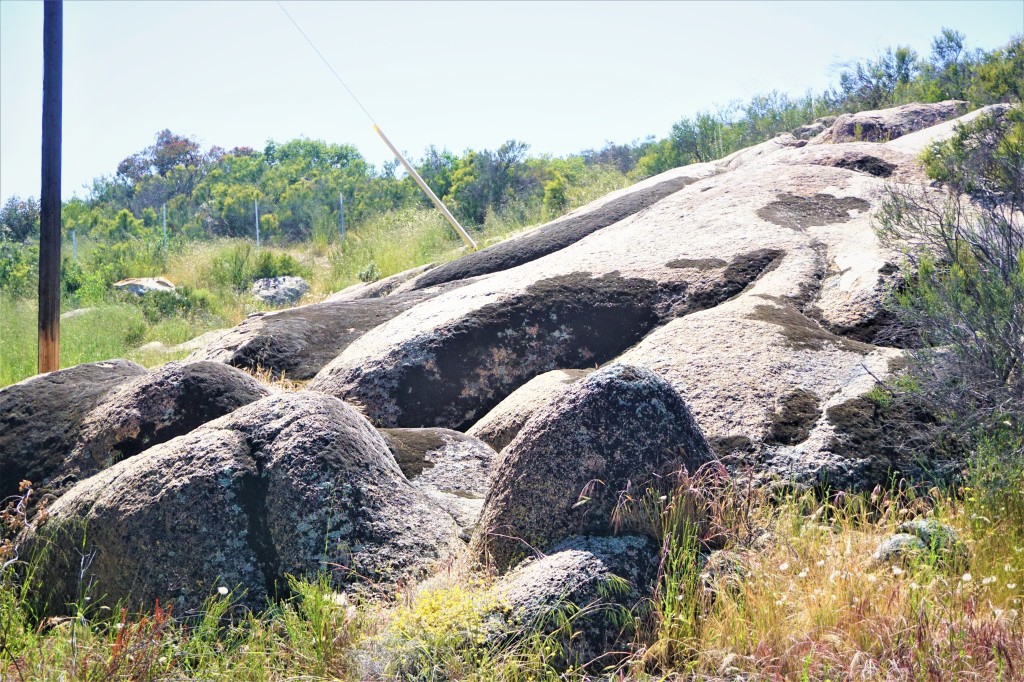


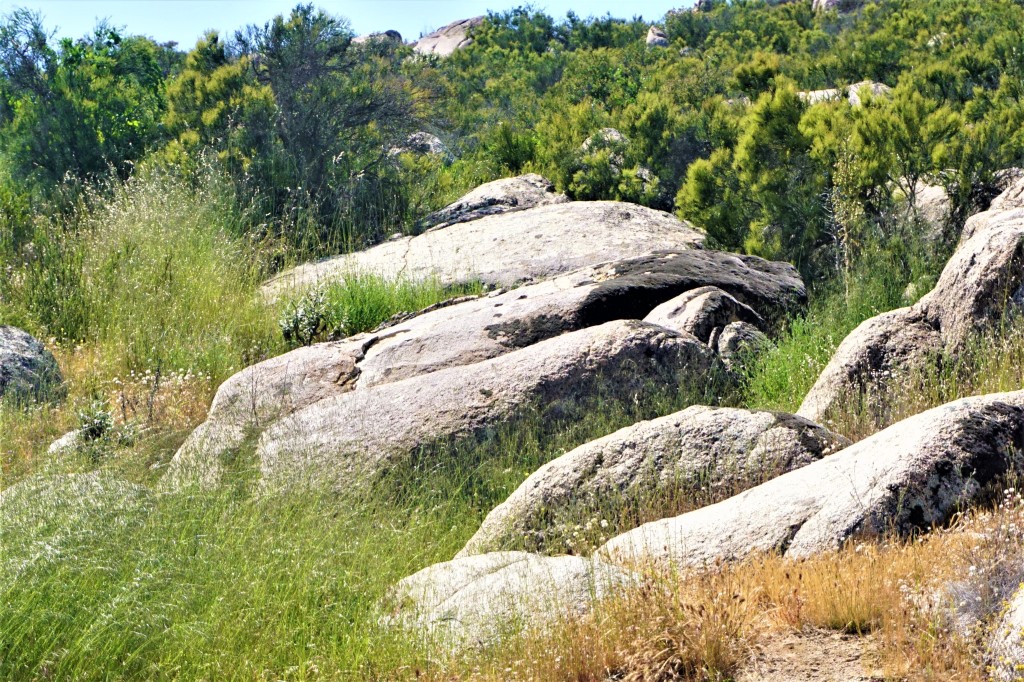
The pattern of a viscous river shows where flows joined to form standing waves:
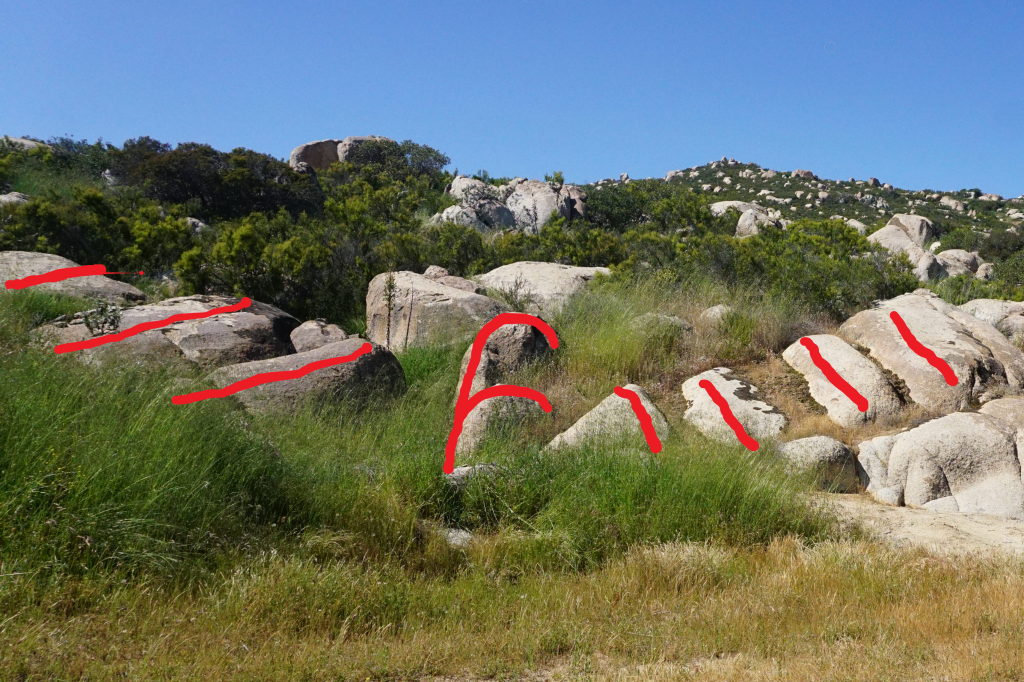
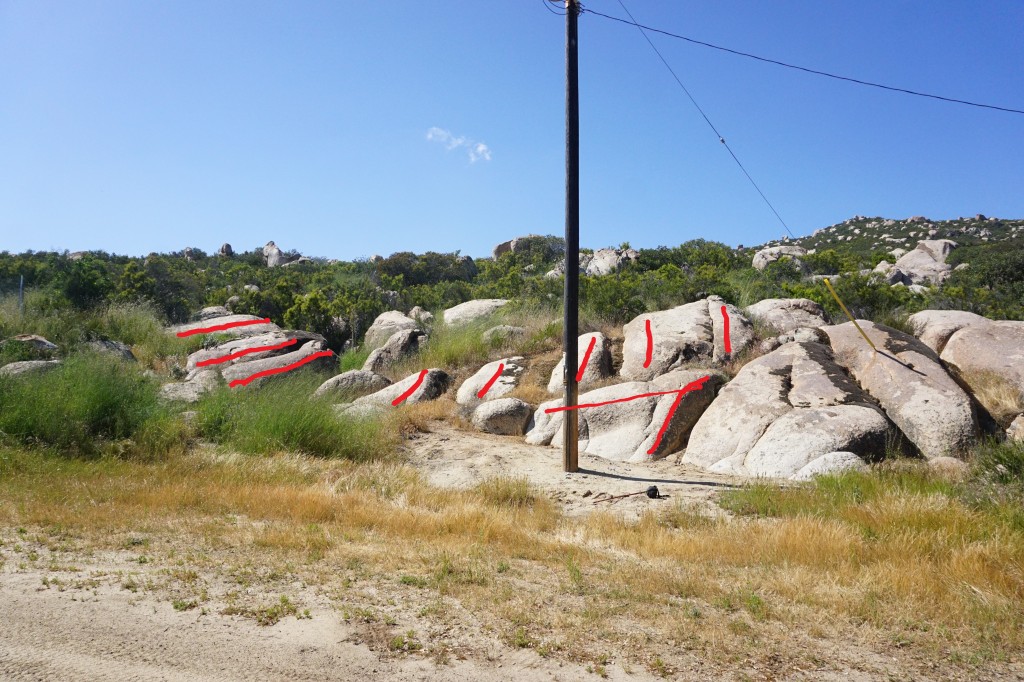
Looking at the foot of the granite flow, it resembles the foot of a glacier, or lava flow:
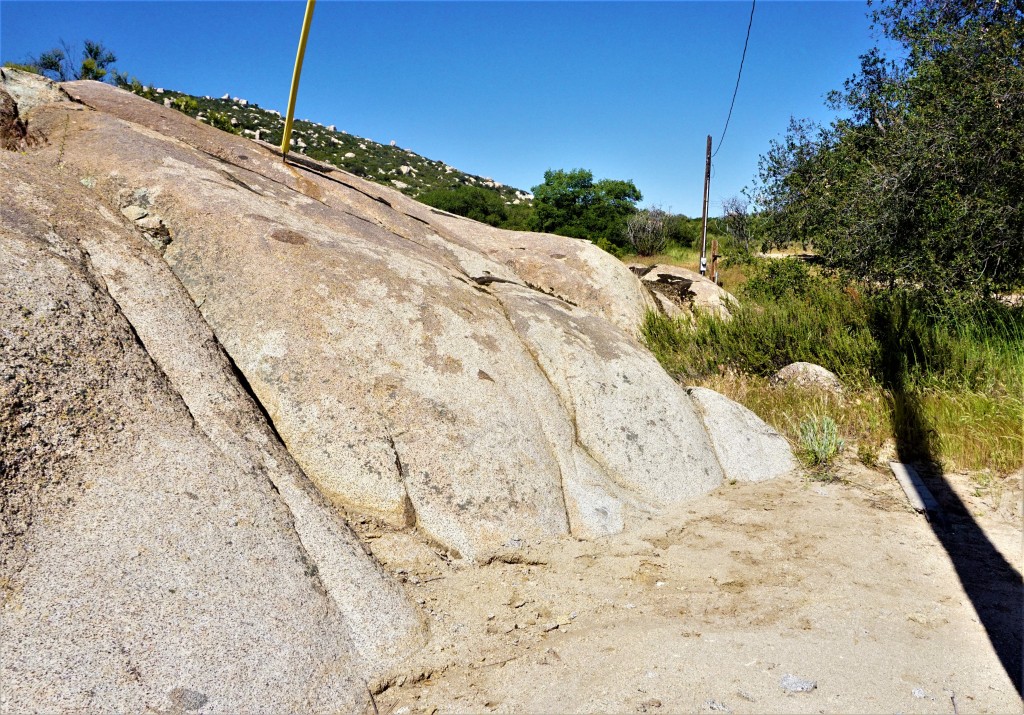
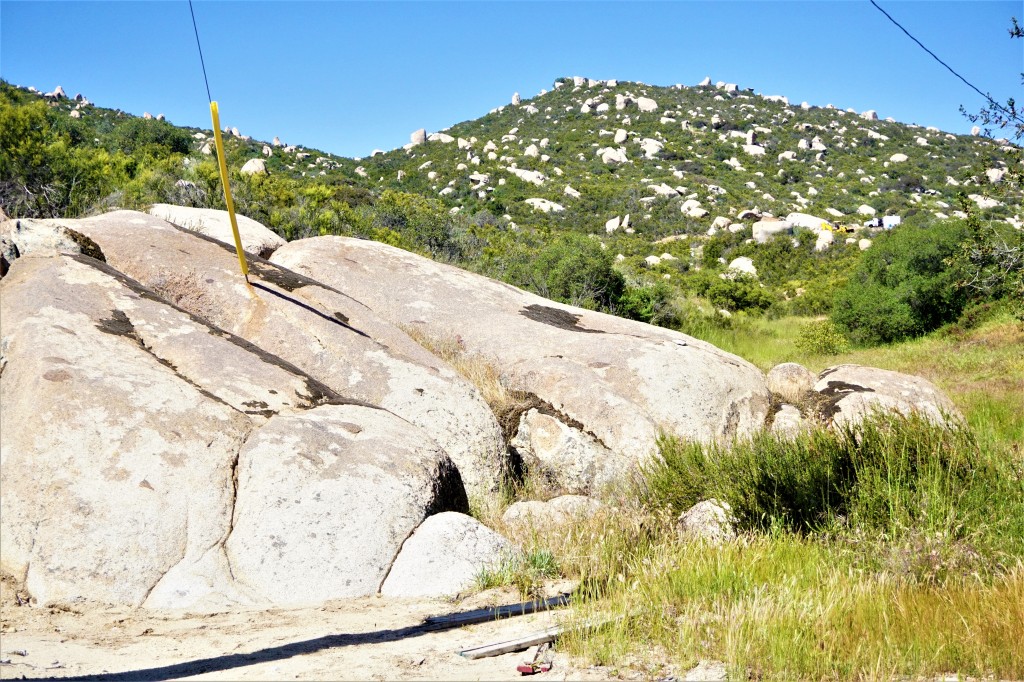
Perhaps the most compelling, singular example the rock formed as a boiling fluid, and suddenly froze when exposed to the atmosphere is shown in the next example. Here, liquid rock has poured out the side of a pillar and froze like a faucet of running water.

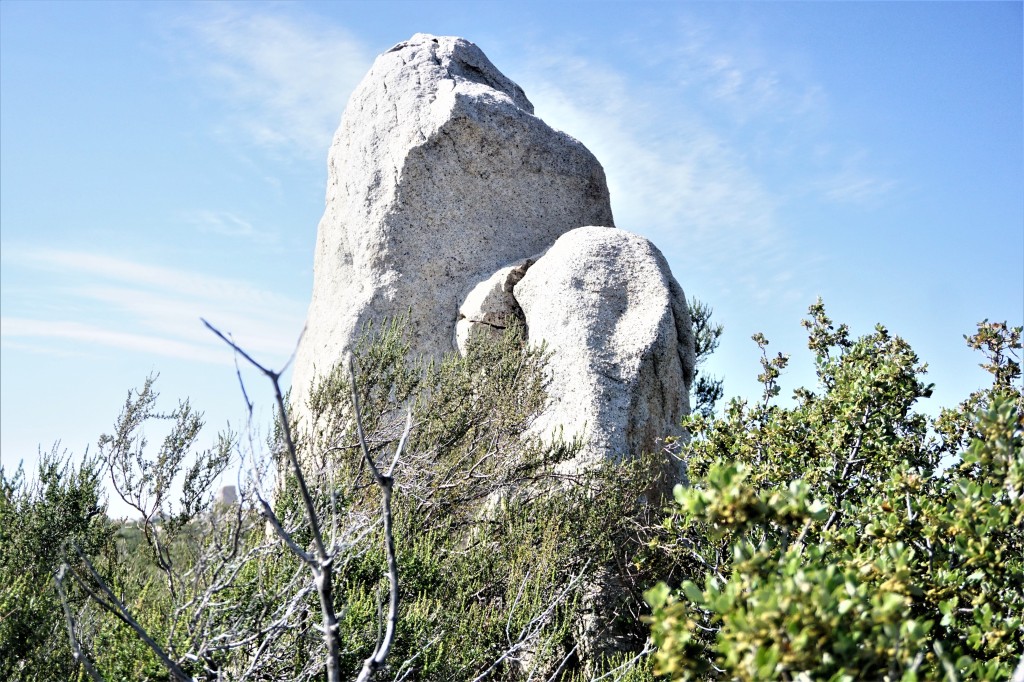

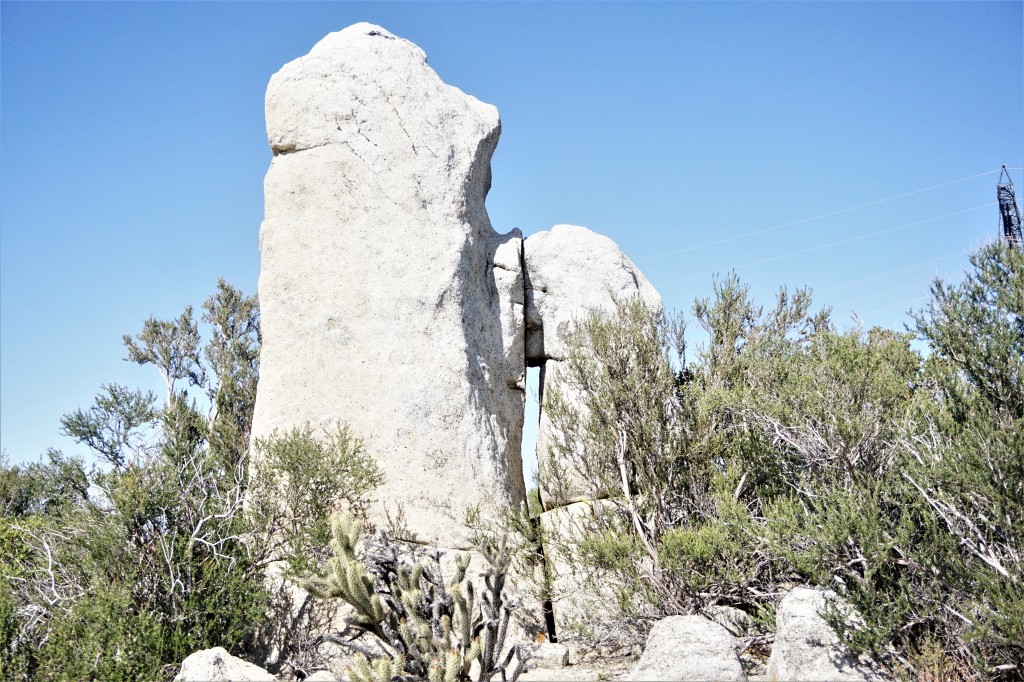
This next photo shows the same thing – a pouring outflow from a standing column:

Like injection molds, the rocks have nubs and tubular pour spouts where fluid passed between cell structures:
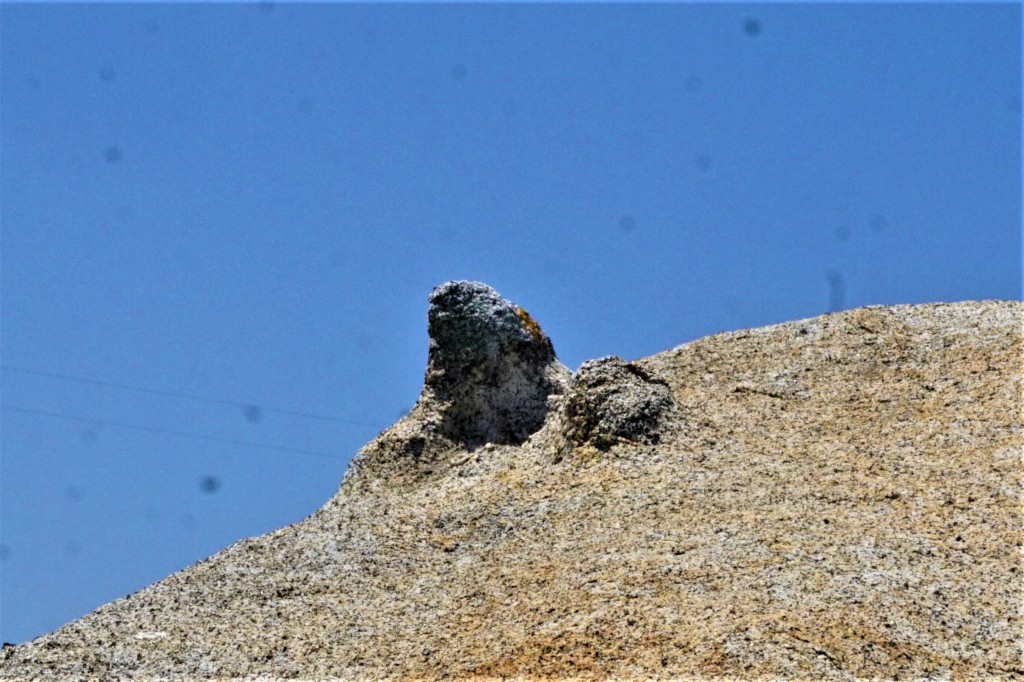


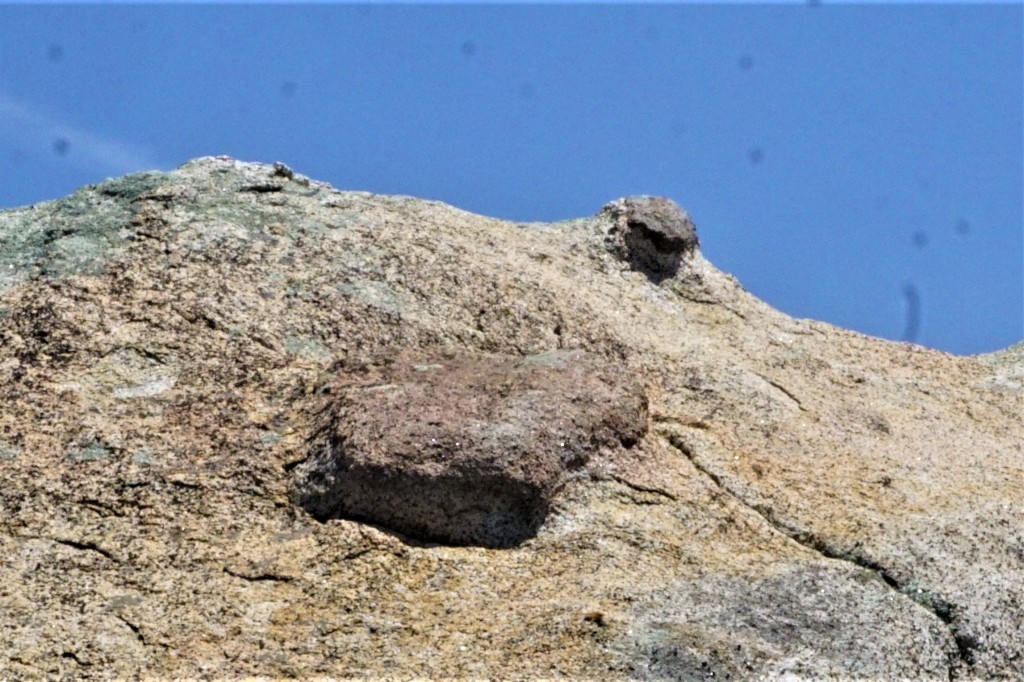

There is something to be said about the regularity of how rocks section in proportion to their volume, as if there were a frequency causing a harmonic response in the body of the rock. It could be a seismic vibration from the fluidized, boiling cauldron itself, or it could be from sonic shock due to atmospheric winds. It’s also possible that the piezoelectric effect of current in the crystallizing skin of the boils caused vibration.
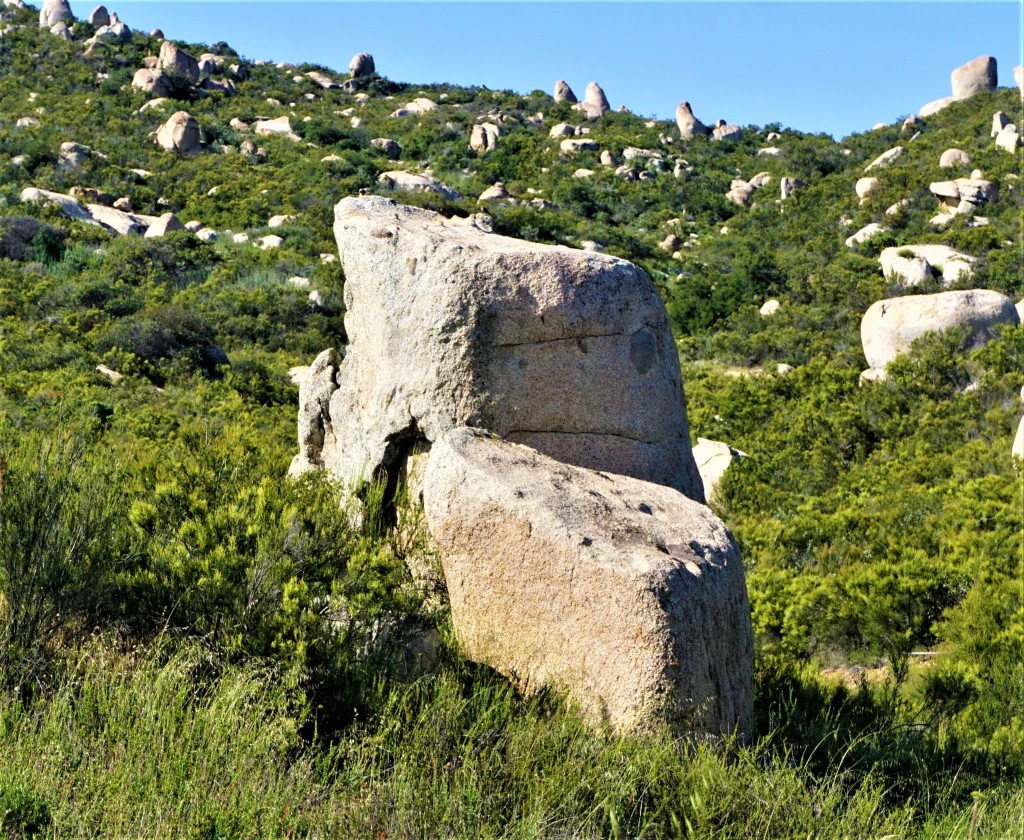
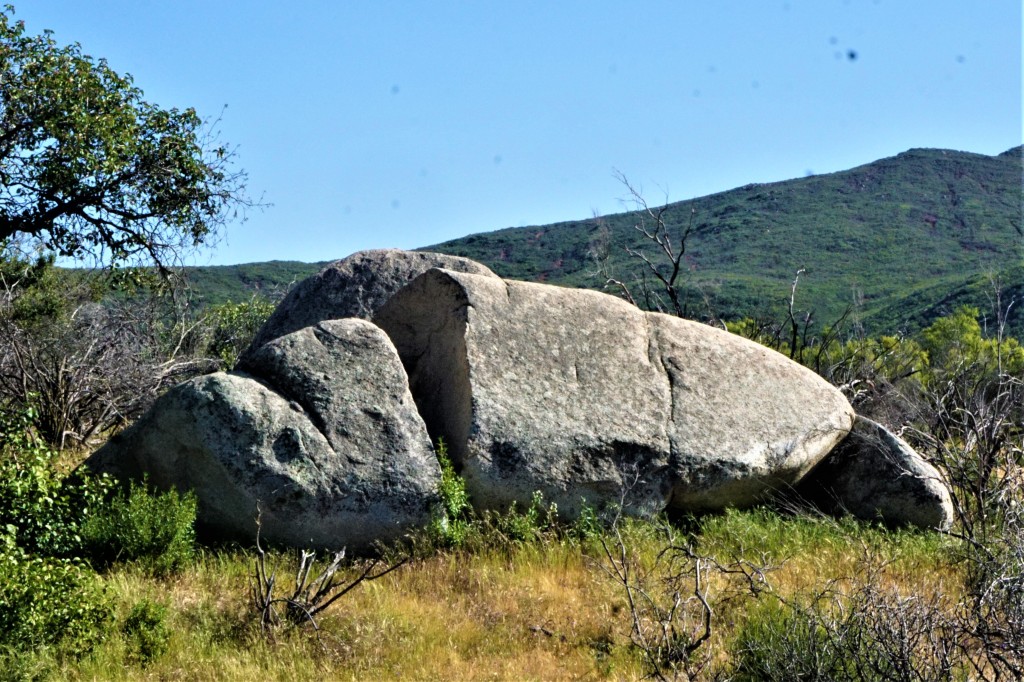
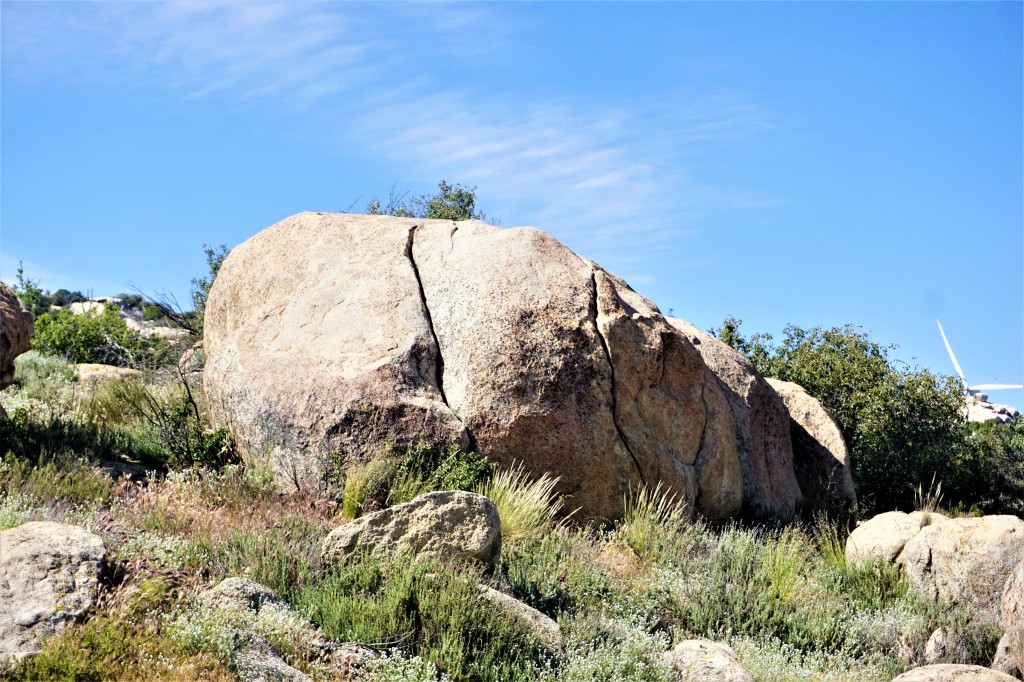

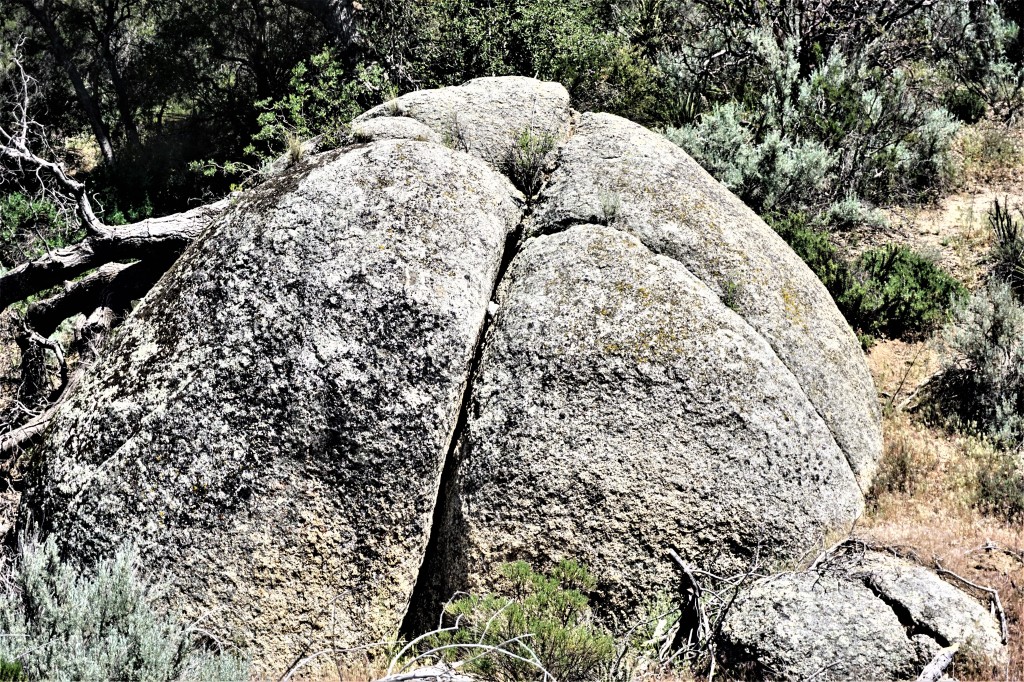

Many questions remain to be answered about how this rock formed. The atomic and chemical reactions are complex given the unknown amounts of current and potential involved, the profusion of elements involved and the unknown state of Earth’s atmosphere. Even Earth’s orbit and what it orbited around at the time these rocks formed is unknown.
One thing for sure, however, these rocks formed in atmospheric pressure. There is no possible way these shapes were produced while confined deep underground. Nor is it possible they were produced by any form of erosion. The forms were caused by a viscous, plastic fluid confined only by surface tension. Their shape is self evident. There is no argument that can be made to deny it. They look like drops and bubbles because they are.
There is a reason boulders boiled from the Earth east of San Diego. To understand how this happened, Part 2 of the Granite Cauldron will look at the mountains themselves and how they formed.
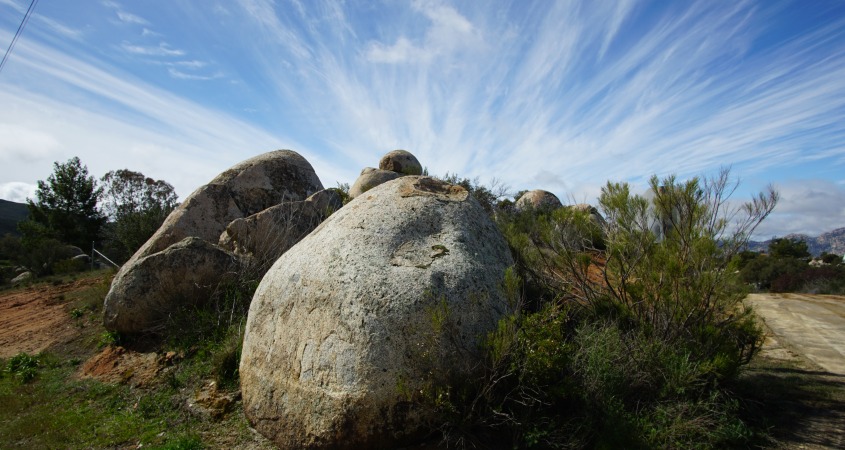

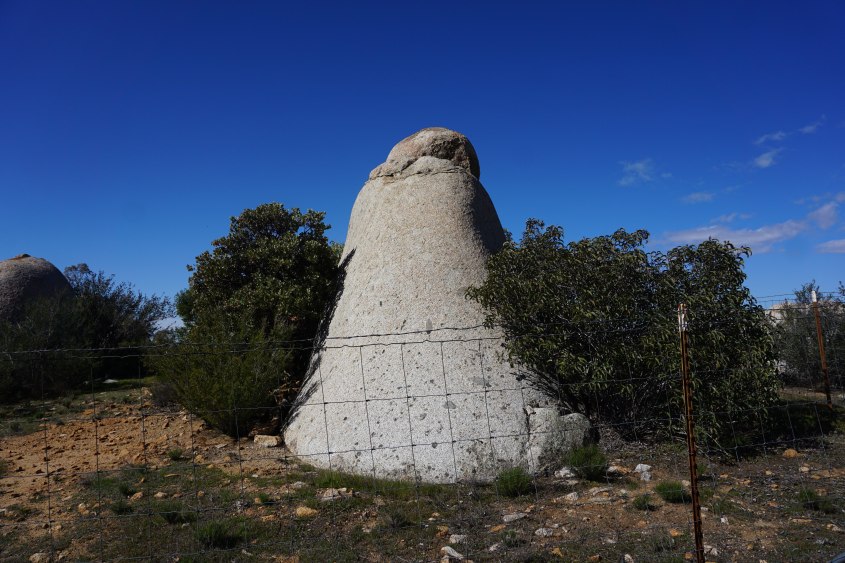
OUT OF CONTROL
Fun but… spalling is how these form. Pressure released at surface, from pressure deep underground still present in the body of the rock relentlessly exfoliating the exposed face. Thus rounding.
You can’t have molten blobs that size. Think man!
About the tornado… seems backward in the sense that ionosphere is positive, earth negative. Clouds are a bank of hydroxyls. Therefore electrons do not seek earth, do not go down, only up. Downstroke lightening is not actually going downward or it would be at lightspeed like the powerstroke. The electrons are trying to reach that cloud… the bolt is electrons jumping to the ionized pathway going into the cloud sporadically – the bolt lengthens incrementally. Appears to go down but all the action is upward. SO it seems the positive charge flow in your description is incongruent. The dust upflow should be negative.
LikeLike
There is no limit to the size of molten blobs.
It all depends on the charge in the strike.
The vacuum is no obstacle. Once a pathway is established, the strike can be fed directly from the Sun, Mars or Venus. The pathway in the atmosphere is crucial. All that diffusion by gases, means the feeder discharges never meet up with the incoming feeders. Once the plasma is strong enough, the meeting of these is ensured with full strikes reinforcing the plasma channels.
Preventing the plasma build up, strengthening the diffusion is one way to prevent recurrence of these ‘thunderbolts’.
May explain why there are chemtrails and HAARP …. almost as if someone ion power actually knows what is coming?
LikeLike
Huh! Liquid, m.f.! Think gravity × liquid. Molten rock may be viscous, but call it plastic or liquid… its going flat. Back to the drawing board; this time factor in gravity.
Search term: spall
Speculation is fun and we thank you for the mental exercise. You are looking at rock spalling.
LikeLike
Huh? Who sent me that!
Think gravity × liquid.
Call it plastic or liquid… molten rock will absolutely trend toward flat.
& your “granite would be microcrystaline at best, or glass from rapid cooling.
Search term: spall
You are looking at rock spall from pressure release at the exposed faces now that this granite was lifted from pressure at depth factored into its matrix.
LikeLike
Yes the Earth is negative, but a cloud of positive ions covers it and that is what lightning connects to. The cloud is negative in a typical cloud to ground strike. Positive ions collecting at high points on the ground is what St.Elmo’s fire is – positive plasma in glow mode. Case proven.
LikeLike
Thanks for responding, what took you so long? Napping, old man?
But it wasn’t a question.
Cloud is NOT negative.
(see: 4th phase of water, Gerald Pollack. a.k.a “EZ water”)
(see: “Electrostatics” A. D. Moore)
Negative does NOT seek negative.
YES, ionosphere is positive, but there are more bands of alternate polarity than just the double layer of the Troposphere, ascending toward space.
(also see: Positive lightening)
Ben Franklin’s kite trick killed scores of people. Explaining that, A D. Moore described a helicopter at 150 feet dropping a cable ladder: the entire bidy of the craft is positive valence 5,000 volts relative to ground. If you grab that ladder before it has a chance to touch ground… the electric current issues from Earth to helicopter through you, and you die.
Blue sky or cloudy doesn’t matter.
My point is valid.
EZ water confirmss the positive nature of the surface on thise droplets.
Colloid chemistry identifies the surface of positive charge prevalent in various sizes of droplers by ratio of surface atoms to volume atoms… THIS is what keeps cloud droplets apart from each other. The deluge of a cloudburst is evidence that an electric discharge into that bank has netralized the force keeping the droplets apart.
You may be familiar with this as the Kobayashi Maru scenario which Captain Kirk cheated to win his promotion in Star Trek… its a real life quandary about how to coalesce colloids.
Q.E.D.: lightning (except for positive lightning) is a staccato series of jumps upward into the positive charge bank of the cloud, via the previously ionized channel from a leading pulse… until fully breaching the dielectric of air to reach ground for the power stroke to be released upward.
Challenge me at your risk, old man!
& have that whippersnapper Buddy James contact me… you guys are sleeping on the job. Or Talbott’s kid.
MY turn, bitches!
LikeLike
Oh, THATS where you have been. Eager to dive into that. Looks magnificent in a skim.
Gonna take a day to read all that but right off i would like to point out that the pyramid is an insulator and they can run a wire up to the top to get a steady 15,000 volts. Only sharp points at the end are required to allow a tame sready corona discharge instead of destructive wire melting sporadic arcing. (ELECTROSTATICS, A.D. Moore)
Point 2 Agreed drift & subduction are nonsense. Continents are old shell upon an expanding blob. Anything with a magnetosphere is a star, a.k.a. Cosmic Egg (look that up). Engines of creation, alive and growing from within. Buckling at the plate perimeters can do some thrusting. And the Ring of Fire is evidence of splitting from below caused by that buckling. Opening splits for upwelling Vulcanism.
Google Earth seafloor images off the coast of Oregon show expansion cracks 3 & 4 miles wide. Some quenched the magma a bit below seafloor level, some a bit higher. Ocean beds are a network of expansion cracks… coastal subduction is stupid. Such thrusting would be like forcing soft clay into soft clay, only plastic deformation would occur. (All earthquakes are strictly tensile)
Over broad areas the impulse to sink to adapt a smaller radius of old crust to the larger radius below it upon this expanding sphere will produce enormous folding pressures. But of course the patterns you show could not occur that way.
LikeLike
Thanks for responding, what took you so long? Napping, old man? But it wasnt a question. Cloud is NOT negative. (see: 4th phase of water, Gerald Pollack. a.k.a EZ water) (see: Electrostatics A. D. Moore) Negative does NOT seek negative. YES, ionosphere is positive, but there are more bands of alternate polarity than just the double layer of the Troposphere, ascending toward space. (also see: Positive lightening) Ben Franklins kite trick killed scores of people. Explaining that, A. D. Moore described a helicopter at 150 feet dropping a cable ladder: the entire body of the craft is positive valence 5,000 volts relative to ground. If you grab that ladder before it has a chance to touch ground the electric current issues from Earth to helicopter through you, and you die. Blue sky or cloudy doesnt matter. My point is valid. EZ water confirms the positive nature of the surface on those droplets. Colloid chemistry identifies the surface of positive charge prevalent in various sizes of droplers by ratio of surface atoms to volume atoms In atmospheric water vapor about 3 out of every ten million are hydroxyl ions. THIS is what keeps cloud droplets apart from each other. The deluge of a cloudburst is evidence that an electric discharge into that bank has neutralized the force keeping the droplets apart. You may be familiar with this as the Kobayashi Maru scenario which Captain Kirk cheated to win his promotion in Star Trek its a real life quandary about how to coalesce colloids. Q.E.D.: lightning (except for positive lightning) is a staccato series of jumps upward into the positive charge bank of the cloud, via the previously ionized channel from a leading pulse until fully breaching the dielectric of air to reach ground for the power stroke to be released upward.
[cid:storage_emulated_0_Download_negroni2__880_jpg_1693883799131]
[cid:storage_emulated_0_Download_I0000OV3WCWfUkFY_jpg_1693883917028]
[cid:storage_emulated_0_Download_SolidEnchantedAmericanpainthorse-max-1mb_gif_1693883934519]
[cid:storage_emulated_0_Download_360_F_571054660_Ea60qAhJYtIb7oTJjf98tSUHyuijvmEB_jpg_1693883958084]
Challenge me at your risk, old man! & have that whippersnapper Buddy James contact me you guys are sleeping on the job. Or Talbotts kid. MY turn, bitches!
LikeLike
Andrew, again brilliant! On target. Wonderful article.
LikeLike
Having witnessed, as a geology student in TX who studied the exfoliating rock outside Austin, I was iimparted with the information from my professor that this was the oldest mountain range on the continent and it had worn down through millions of years of erosion. But I saw something else and didn’t fare well in geology. At the time, I was a hot glass artist and viewed this exfoliating ‘hill’ akin to what I witnessed in the glass studio. I have been following your work for years and I must say you have taken geology to an entirely new level. You are to be commended on your observations and study, very well done!
For the record, I traveled a few years ago through Utah and kept your logic on the forefront. I’ve traveled through there enroute from WA to TX for years and the last few times I see it completely different. More splendid, powerful and downright frightening to see the planet in a different light. I’ve attempted to enlighten my ex-husband, a retired geophysicist to re-explore sites we once visited with a new perspective. He repeatedly refuses and has complete disinterest. A fine example of how the established scientific community is a bugger to budge.
I love your explorations and fresh perspective and look forward to Part 2! Very best, Diane Frank
LikeLike
Bless you Diane! It is a more splendid world, and it’s a shame so many won’t even let themselves look.
LikeLike
The stone formations are very similar to megalithic walls in Peru and elsewhere, which also have “Nubs” For example search for Sacsayhuamán. These are clearly “made” and not natural, could they have used some as yet unknown process to heat the stone to produce these walls?
LikeLike
Damn good question, Andrew. My guess is the earth itself was in a higher potential environment to begin with and had lower gravity – hence bigger animals and bigger stones. I’m talking pre-deluvian, or Younger Dryas time frame. The rock may have been softer, or easily able to be made soft with the application of potential across it. Or it could be they waited for an electric storm to charge and soften the rock.
LikeLiked by 1 person
Standing waves are also ‘pinches’. They disappear when the source is turned off, as when polarity changes, every c.500 years, currently (sorry!). The removal of these restraints means the energy plasmoids which we call matter, expand. They are then restricted when the standing waves return.
LikeLike
Good work! Thanks.
It seems Venus is the likeliest culprit. It seems to have been supercharged, missing its ‘intended’ orbital as its moon, Mercury took up that place. Sucking up the magma was the result. The SiO2 seems to have been the result of the destruction of Apollo/Abel. Brought in massive bands to the Earth by what we call Halley’s comet.
What effect would this have had on Yellowstone?
The greatest discharges seem to have been in the Americas.
If it were Venus, then there had also been the Dryas discharges as the planet was born of the Sun/Saturn. Coincidence or else there is residual charge awaiting another planetary event, 30 years away …. This area may be problematic?
LikeLike
The whole earth is problematic. We need to restore the magnetic field. Much work ahead.
LikeLike
Only someone who hasn’t seen the discharge channels in Central Australia would say that 😉
e.g. https://www.google.com.au/maps/@-23.3522504,141.3193537,612669m/data=!3m1!1e3?entry=ttu
LikeLike
Those were the result of charge flowing through water? No evident orogenesis.
LikeLike
Excellent lesson in the probable formation of these rock clusters. I admire your ability to explain what you see and to understand how these stones might have come into being.
LikeLike
Brilliant as always… I’ve been a rock climber for decades now, and what you describe gets to the heart of what every climber who’s sampled that rounded granite in SoCal knows intimately…
LikeLike
Thanks for the great articles as always. You’re right, much of the rock on Earth came from interplanetary electrical discharges from Mercury, Venus, the Moon, etc.
Click to access translation_20200525.pdf
LikeLike
those last photos of the crosses in the rocks made me think of chiastolite writ large.
LikeLike